

#TravelThrowback: Philippine tourism slogans and campaigns through the years
By Kara Santos Published Aug 30, 2022 2:10 pm Updated Aug 30, 2022 3:13 pm
Slogans play a large part in promoting a travel destination and attracting tourists not only within the country, but all over the world.
Just think of "Incredible India," "Amazing Thailand," and "Malaysia, Truly Asia." These slogans immediately bring images of the destinations to mind. Some country’s tourism slogans are just so timeless and have great recall value that tourists know exactly what to expect.
For the past 10 years, the Philippines has been using “It’s More Fun in the Philippines” as its main tourism slogan. But with a new administration in place this year, the campaign could soon change.
In a report by PhilStar.com earlier this month, current Tourism Secretary Christina Frasco said that the Department of Tourism (DOT) was considering replacing the slogan with a new one anchored on making the Filipino brand more “distinct.”
The tourism chief said the new branding campaign will “take into consideration the change in circumstances, citing that amid the COVID-19 pandemic, people are now in search for substantial and immersive experiences anchored on cultural experience.”
While the tourism agency is still brewing up a new campaign, since travel borders are reeopning, now seems like a good time to take a look back at some of the hits and misses in tourism marketing of the Philippines.
The country has had its fair share of different promotional slogans through the years. A Wall Street Journal article published in 2001 pointed out that for years, the country struggled to find a catchy slogan. The report cited campaigns in the past including "Philippines: Where Asia Wears A Smile," " Fiesta Islands Philippines ," "Rediscovery Philippines" and the almost-apologetic "Consider the Philippines."
In an official proclamation, then-president Cory Aquino declared 1989 as the Philippine Fiesta Year. A national council was also created to promote the country as the Fiesta Islands of 1989.
However, it was two decades ago when one of the most memorable slogans in local tourism was born.
WOW Philippines (2002)
WOW Philippines was used as the campaign and tagline for tourism from 2002 to 2010. The tagline, which had the sub-slogan "More Than the Usual” was conceptualized by then Department of Tourism secretary Richard "Dick" Gordon in 2002 under the term of Gloria Macapagal-Arroyo.
The promotional campaign was reportedly based on the 24-month Visit Philippines 2003 campaign by the World Tourism Organization, which aimed to encourage overseas Filipinos to visit tourism destinations in their home country. The slogan was also an attempt to rebrand the Philippines to highlight tropical white-sand beaches and diverse attractions to counter the country's negative portrayal in the media due to political instability and conflicts during those times.

The logo, which used mainly primary colors of red and blue, incorporated unique elements of Philippine culture including a jeepney and festival mask, as well as a sun, coconut tree, diver and boat to reflect the tropical beaches and landscapes.
WOW actually doubled as an acronym, referring to several different aspects about Philippine travel including “Wealth of Wonders” (tourist attractions), “Warm Over Winter” (beaches), “Wild Over Water”(water-based adventures), and “Wacko Over Wildlife” (for the country’s rich indigenous flora and fauna), among others.
The WOW Philippines campaign was considered highly successful and managed to put the Philippines on the world tourism map for the first time. Incidentally, the former tourism secretary also used "WOW Dick" as his campaign slogan when he ran for senator, banking on the campaign's popuilarity.
Pilipinas Kay Ganda (2010)
Pilipinas Kay Ganda (which literally translates to "Philippines, So Beautiful") was a short-lived campaign launched by DOT back in 2010 which (thankfully) failed to take off. Initially aimed to replace the WOW Philippines campaign, the logo and branding used similar colors and elements as the former logo including a sun and coconut tree (with a smiling face), a tarsier, and wavy lines to signify the beach and tropical island vibe.

Unfortunately, the slogan and associated logo received a lot of flak from the Filipino public when it was first released, prematurely to the public, according to the advertising agency Campaigns & Grey, which supervised the design. A controversy arose because the logo bore a similar look to the logo of the Polish tourism campaign, Polska in terms of style, colors and font design used.
The widespread criticism led to the eventual scrapping of the new slogan by no less than President Benigno “Noynoy” Aquino III and the resignation of the country's then-Tourism Secretary, Alberto Lim.
It’s More Fun in the Philippines (2012)
In 2012, the DOT started a brand new campaign that aimed to brand the Philippines as the perfect destination for beach bums and dive lovers. The slogan "It's More Fun in the Philippines" was conceptualized with the help of BBDO Guerrero and Proximity Philippines under then Tourism Secretary Ramon Jimenez Jr., an advertising executive.

The punchy slogan aimed to show what sets the country apart from others in terms of the “fun factor” and entice foreign visitors to visit our shores. The colorful logo showed recreated the Philippine map in a textile type weave, while the official AVP highlighted the diverse islands, beaches, tourist sites, festivals and food of the country. The visuals, set to fast-paced music, were dynamic and exciting and highlighted the unique aspects and culture of the country that adventurous foreign tourists could look forward to.
The “More Fun” slogan caught on and became wildly popular with Pinoy users submitting their own photos and reasons why the Philippines was "more fun" with the help of an online meme maker. The user-generated ads that channeled the pride of millions of Filipinos managed to gain a lot of traction in promoting the country overseas, resulting in higher tourist arrivals for the country.
The Tourism Promotions Board also collaborated with world renowned artist and Philippine Tourism Ambassador Apl.de.Ap for one of the promotional campaigns.
Under this campaign, from 2011 to 2016, tourist arrivals and revenues almost doubled, and the Philippines improved 20 places in a tourism competitive index among nations.
Experience the Philippines (2016)
In 2016, there were talks that the “It’s More Fun” slogan would be replaced to reflect then President Rodrigo Duterte’s goal to institute reforms in the country.
At one point, former tourism secretary Wanda Teo planned to scrap the campaign in 2017 and replace it with “Experience the Philippines,” a more emotional approach that aimed to tug at the heartstrings of viewers. The minimalist logo retained the monochomatic colors in the Philippines text and a smaller "It's more fun in the Philippines" tagline in a smaller white font right below.

Right in time for Philippine Independence Day, the Department of Tourism l aunched the TV commercial "Sights" produced by McCann Worldgroup Philippines which featured a Japanese retiree wearing a tourist hat and dark glasses named M. Uchimura touring the different destinations in the Philippines. The ad, which eventually revealed that the retiree was visually-impaired, ended with a voice-over saying, “here, you don’t have to see the sun to discover radiance. You don’t have to see colors to experience vibrance. You don’t have to see smiles to know you are safe.”
At the time, the campaign drew mixed reactions on social media, with many netizens skeptical about promoting the Philippines as a PWD-friendly destination, and pointing out all the negative events happening around the country. Netizens were also quick to draw comparisons to the “Rediscover South Africa” advertisement, which shared a similar concept and plot twist, and criticize the campaign's lack of originality.
It’s More Fun in the Philippines / More Fun Awaits (present)
Bernadette Romulo Puyat decided to retain the “More Fun” campaign when she was appointed DOT chief mid-2018. However, the former logo was given a slight makeover and got refreshed with a custom-made Philippine-inspired font called Barabara, inspired by lettering seen on jeepneys. The Philippine map logo got simplified with just a few lines.

The new design was said to be more “rooted in traditional motifs and colors” while the new logo was inspired by local woven textiles, and is considered as the “core of a fresh graphic identity system” symbolizing the DOT’s fun, contemporary, and more sustainable offerings.
During the pandemic era when travel borders were closed, DOT also launched its "More Fun Awaits" campaign with the same look to promote newly-developed products and packages featuring different activities, experiences, destinations and attractions for tourists to discover and enjoy in the country once it's safe to travel again.

The new ads were notably not as fast-paced and frenetic as the earlier “It’s More Fun” ads, and highlighted mainly the outdoor attractions and safety and health protocols of travel during the new normal.
Which of these tourism slogans is your favorite? Do you think it's time for another tourism campaign makeover now that travel borders everywhere are starting to reopen?
TAGS: travel tourism Tourism slogans
Kara Santos
Kara Santos is a freelance writer and photographer based in Manila. Her blog at www.traveling-up.com is where she writes about travel, motorcycling, and food trips.
The colorful tourism slogans: More Fun, Wow, and Love the Philippines
Before “Love the Philippines,” there were “WOW Philippines,” “It’s More Fun in the Philippines,” Pilipinas Kay Ganda,” and many more colorful slogans that all aimed to attract more tourists while projecting in just a few words what the country offers to the traveler.
Tourism slogans are used to represent what a country is all about – its energy, culture, and natural wonders. From white sand beaches and pristine dive spots, to rice terraces and cultural heritage sights, the country continues to attract tourists through the use of slogans.
Love the Philippines
In June, 2023, the Department of Tourism (DOT) unveiled a new tourism slogan – “Love the Philippines.”

Love the Philippines (Photo from DOT Facebook page)
“’Love the Philippines’ is a recognition of our natural assets, our long and storied history, our rich culture and diversity,” said Tourism Secretary Christina Frasco during DOT’s 50th anniversary celebration at Manila Hotel.
It’s More Fun in the Philippines
Before “Love the Philippines” was “It’s More Fun in the Philippines” campaign which was launched in 2012. That was one of the country’s most popular and recognizable slogans as it branded the country as a perfect destination for tourists looking for the best beaches and adventures, according to DOT.

The slogan’s directness enabled it to be used as the country’s primary slogan for over a decade, with multiple spin-offs through the years, such as “More Fun Awaits” in 2018, and “Experience the Philippines” in 2016 that highlights Filipino family values.
Gathering a few international awards, the slogan was used until the first half of 2023.
The “Pilipinas Kay Ganda (Philippines, So Beautiful)” campaign from 2010 was short-lived as the campaign’s logo, colors, and even the font design was widely criticized for being similar to the style of tourism campaign of Poland, according to news reports.
WOW Philippines
Launched in 2002, the “WOW Philippines” campaign and its sub-tagline “More Than the Usual” was regarded as a highly successful attempt to rebrand the country as a haven of white-sand beaches and unique attractions contrary to conflicts and political instability the country was facing at the time.
The slogan was used until 2010.
The word “WOW” from the slogan was also utilized to refer to what the Philippines has to offer, from “Wealth of Wonders,” “Wild Over Water,” “Wacko Over Wildlife,” and “Warm Over Winter,” among many others.
Its logo used the colors red and blue with unique elements reflecting Philippine culture, such as a festival mask, jeepney, coconut tree, diver, and a boat.
Spin-offs from the campaign aimed to boost domestic travel were produced such as the “Pilipinas, Tara Na!” that even had a music video featuring popular Filipino artists and musicians.
Other slogans
The country’s tourism slogans each carried a distinct charm. Here’s a few more: “Fiesta Island Philippines,” “Philippines: Where Asia Wears A Smile,” “Rediscovery Philippines,” and “Consider the Philippines.”
Slogans aim to capture attention and curiosity of people. ( Pancho Parian )
- In The News
- Entertainment
- The Great Filipino Story

How do you feel about this story?
Over the years, the Department of Tourism has been planning and using memorable tourism campaign slogans to attract tourists and present the beautiful Philippines to the world.
And just recently, the Department of Tourism unveiled its new tourism slogan, “Love the Philippines.
Tourism Secretary Christina Frasco disclosed that this slogan aims to encourage every Filipino to remember the Philippines’ beauty, honor its past, and look forward to the future.
Noting this new tourism slogan, let’s take a look back at the previous campaigns that also brought a name to Philippine tourism.
1. “It’s More Fun in the Philippines”
The tourism tagline “It’s More Fun in the Philippines” was launched in 2012 by the chairman of an advertising company, David Guerrero.
Upon its reveal, it was announced to represent two things: the “fun” character of Filipinos and the Philippines as a place where people would have “more fun” than in another country.
With the goal of boosting the country’s global exposure, the campaign tapped the power of social media by launching its own website, which gained recognition and awards globally.
The campaign was seen as improving the country’s tourism numbers as it lasted for 11 years.
2. “Experience the Philippines”
In 2017, the Department of Tourism launched the “Experience the Philippines” campaign.
Instead of merely having “fun,” the Department wants to highlight the Filipino people, stressing that it’s the people that make one’s experience in the Philippines fulfilling and memorable.
The campaign also shifted its focus towards the unique experiences that the local destinations could offer.
Hence, the campaign was unfortunately short-lived as the tourism department rebranded and restored the “It’s More Fun in the Philippines” campaign in mid-2018.
3. “Pilipinas Kay Ganda!”
In November 2010, the “Pilipinas Kay Ganda!” campaign was launched by the Department of Tourism under the term of Tourism Secretary Alberto Lim.
The Department said that it used the word “Pilipinas” to capture the renewed pride and hope of the Filipinos.
They also added the phrase “Kay Ganda!” to spotlight the positive spirit among the people of the country.
However, the campaign was ordered by former President Benigno “Noynoy” Aquino III to be replaced following the controversy comparing the campaign’s logo to the Polish tourism slogan.
4. “Wow Philippines”
“WOW Philippines” was conceptualized in 2002 by then-Tourism Secretary Richard Gordon under Gloria Macapagal-Arroyo’s term.
The campaign attempted to highlight the tropical white-sand beaches and diverse attractions in the Philippines.
“WOW” stood for various catchphrases that could be changed according to the place that was to be promoted.
Examples of these catchphrases are “Wild Over Water,” which refers to adventures underwater; “Warm Over Winter” for Boracay escapades; and “Walk Our Walls” for Intramuros sightseeing.
The campaign lasted until 2010 and was considered successful as it managed to put the Philippines on the world tourism map for the first time.
These slogans might be just a display for souvenirs for some, but these words deliver a huge impact to our country as they not just encompass tourism but the overall image of Filipinos in other countries. Out of all these slogans, what is your favorite?
Martin Lawrence On Bond With Will Smith Is The Real-Life “Ride Or Die” Friendship
This airline introduces vip travel for your furry friends, baguio’s giant ‘paella ala cordillera’ full of local goodness, scarlett johansson, channing tatum shine in “fly me to the moon” posters, premiering july, leyte elderlies tapped for dot’s community tour guiding program, deped to offer special learning areas in new elementary school site, migs visits trending crispy pata house in “my puhunan”, barmm oks php74 million new investment as region exceeds 2024 target, antique prepares 5k indigenous seedlings for tree growing, filipino filmmaker lone ph representative at film academy in cannes, melai cantiveros – francisco named honorary ambassador for korea family tourism, meet the seven filipinos who made it to forbes’ asia 30 under 30 list, visually impaired student wins gold in cebu regional athletic meet, philippine further strengthens preps for united nations climate meeting in germany, dpwh plants 344k replacement trees cut due to road projects in leyte, philippines, japan to hold joint research on water concerns, ccc, lgus ramp up efforts to implement national climate plans.
Apply for Job Openings Apply for Internships
Subscribe to Newsstand
User Agreement Privacy Policy Commenting & Moderating Policy Linking Policy
PAGEONE is a part of PAGEONE Online Network of PAGEONE Media®. PAGEONE Online Network is a powerful portfolio of websites that serving highly-engaged audience monthly. From young to adult men and women, our audience show an unparalleled commitment to our online platforms and content.

Branding ng bayan: Tourism slogans for the Philippines through the years
MANILA, Philippines – The Department of Tourism launched a new tourism slogan on Tuesday, June 27, presenting the world with a new imperative: “Love the Philippines.” It’s the latest era in the constantly shifting identity of Filipino tourism campaigns, which, over the years, has straight-up invited visitors to travel around the country, painted the Philippines as a “wealth of wonders” and a country of smiles, put the spotlight on the country’s …
Coverage Details
Bias distribution.
- 100 % of the sources lean Left

To view factuality data please Upgrade to Premium
To view ownership data please Upgrade to Vantage
Similar News Topics
You are using an outdated browser. Please upgrade your browser to improve your experience.

Please select region
- National Capital Region
- Cordillera Administrative Region
- Ilocos Region
- Cagayan Valley
- Central Luzon
- Bicol Region
- Western Visayas
- Central Visayas
- Eastern Visayas
- Zamboanga Peninsula
- Northern Mindanao
- Davao Region
- SOCCSKSARGEN
- Caraga Region
What to expect from the ‘Love the Philippines’ campaign?
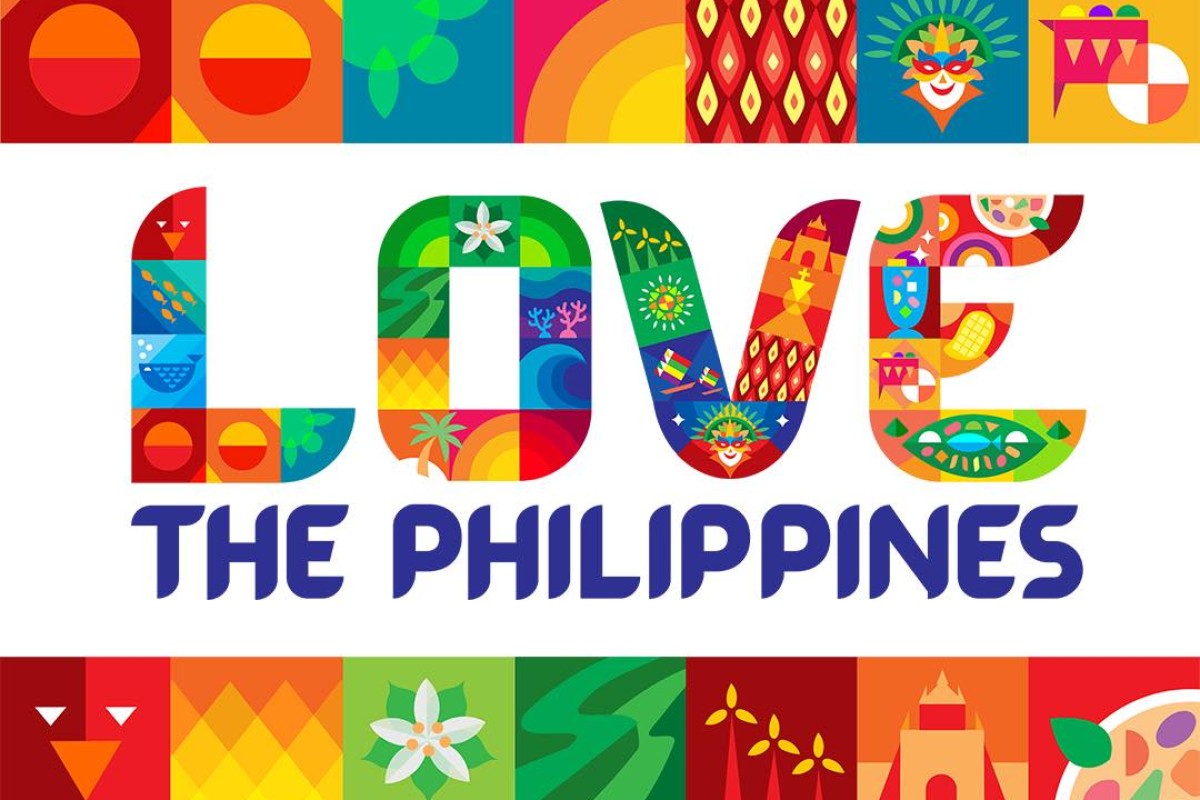
No. of Shares:
Currently viewed by: Marcus Rosit
- by Kate Shiene Austria
- Jun. 29, 2023 3:22 pm in Features
The Department of Tourism (DOT) recently unveiled a new tourism campaign slogan “Love the Philippines,” replacing the 11-year-old “It’s More Fun in the Philippines” brand in a bid to offer not only fun, but also meaningful travel experience.
“Love the Philippines goes to the very heart of every single Filipino. With the distinct grace and hospitality with which we welcome every guest that comes into our shores, our communities, and our homes,” Tourism Sec. Christina Garcia-Frasco said during the launch in Manila, emphasizing that with this initiative, the country intends to showcase the many reasons to love the Philippines, besides the leisure and fun aspect.
“Love the Philippines is a recognition of our assets, our long history, our rich culture, and diversity,” she added.
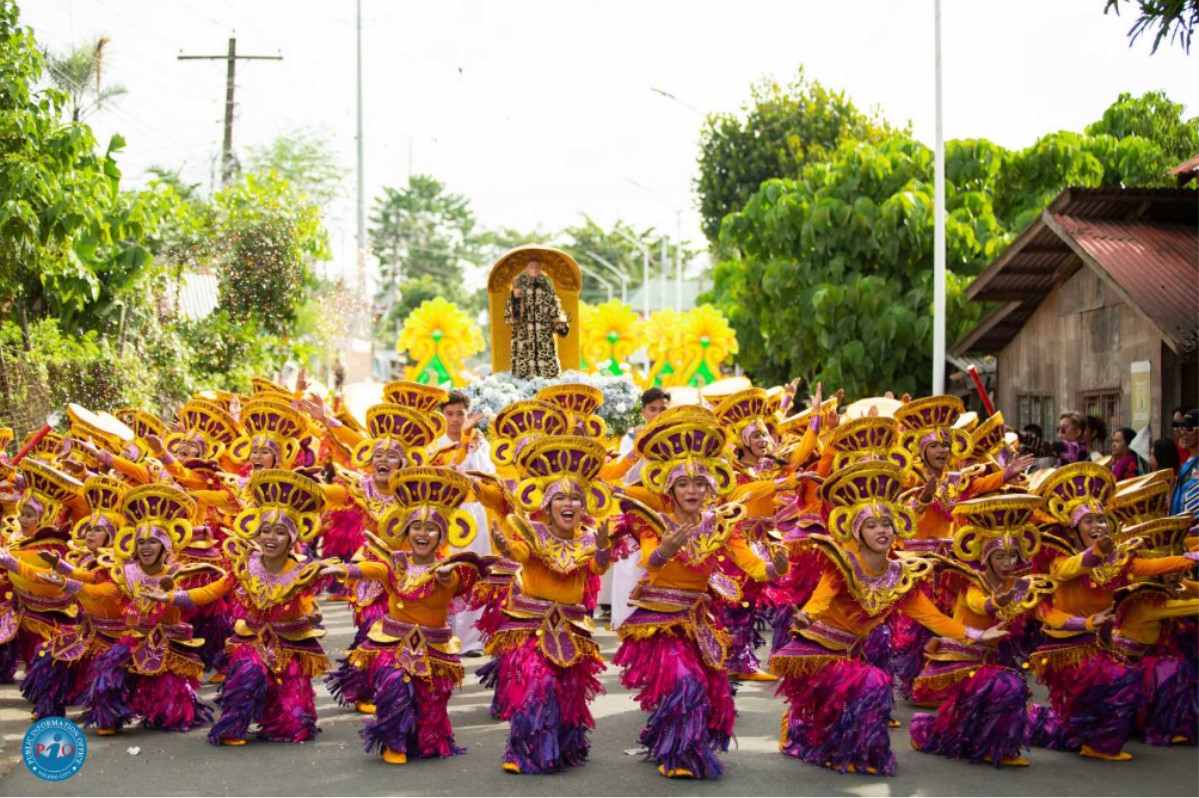
The Philippines holds fiestas the whole year round.
‘Yung Love the Philippines is an effort para naman mabigyan natin ‘yung ating bansa ng pagkakataon na i-market natin sya dito at sa buong mundo. Not just on the aspect of fun, but on all the other aspects of our beautiful country including our culture, heritage, food, people, our various activities, talents, indigenous people. There are so many reasons to love the Philippines,” she further said.
Frasco also noted the excitement the Filipinos expressed as a response to the new campaign and assured the public that it is just the start of many tourism enhancement initiatives. She hopes that it will be a sustainable campaign highlighting every corner of the country.
What to expect?
Meaningful Experience
According to DDB Group Philippines’ Brand and Strategic Planner Marie Adriano, who led the creation of the idea, the new campaign reflects the changing travel landscape where tourists of the post-pandemic seek to travel for meaningful and real-world experiences.
“We call them the ‘changed traveler’ for the very reason that traveling has come to mean more than just leisure,” she said. She also added that changed travelers look for experiences that are unique and where they can immerse themselves in other cultures.

It can be remembered that the DOT launched the Philippine Experience and Bisita Be My Guest program in the first quarter of 2023, centered around the extraordinary identity of Filipinos and its defining cultural values and attributes as a nation.
In the released promotional video of Love the Philippines, it highlights the different aspects the country has to offer, including adventure. Included in the tourism efforts of the administration is the exploration of unpopular destinations in the country.
Last May 28, 2023, the DOT National Capital Region recently launched the “Hop On, Hop Off (HOHO): Travel by the Hubs” in Makati City that provided convenient transportation to tourists interested in exploring the uncharted tourist spots inside the 17 cities in the National Capital Region.

Accordingly, Tourism Chief Frasco said that the HOHO tourism bus will be duplicated in other regions.
The Philippines is a foodie's paradise. Each of its 17 regions is blessed with an abundance of seafood, vegetables, fruits, and exotic ingredients. This diversity of produce has given rise to a wide variety of delicious and colorful dishes that are sure to tantalize your taste buds.
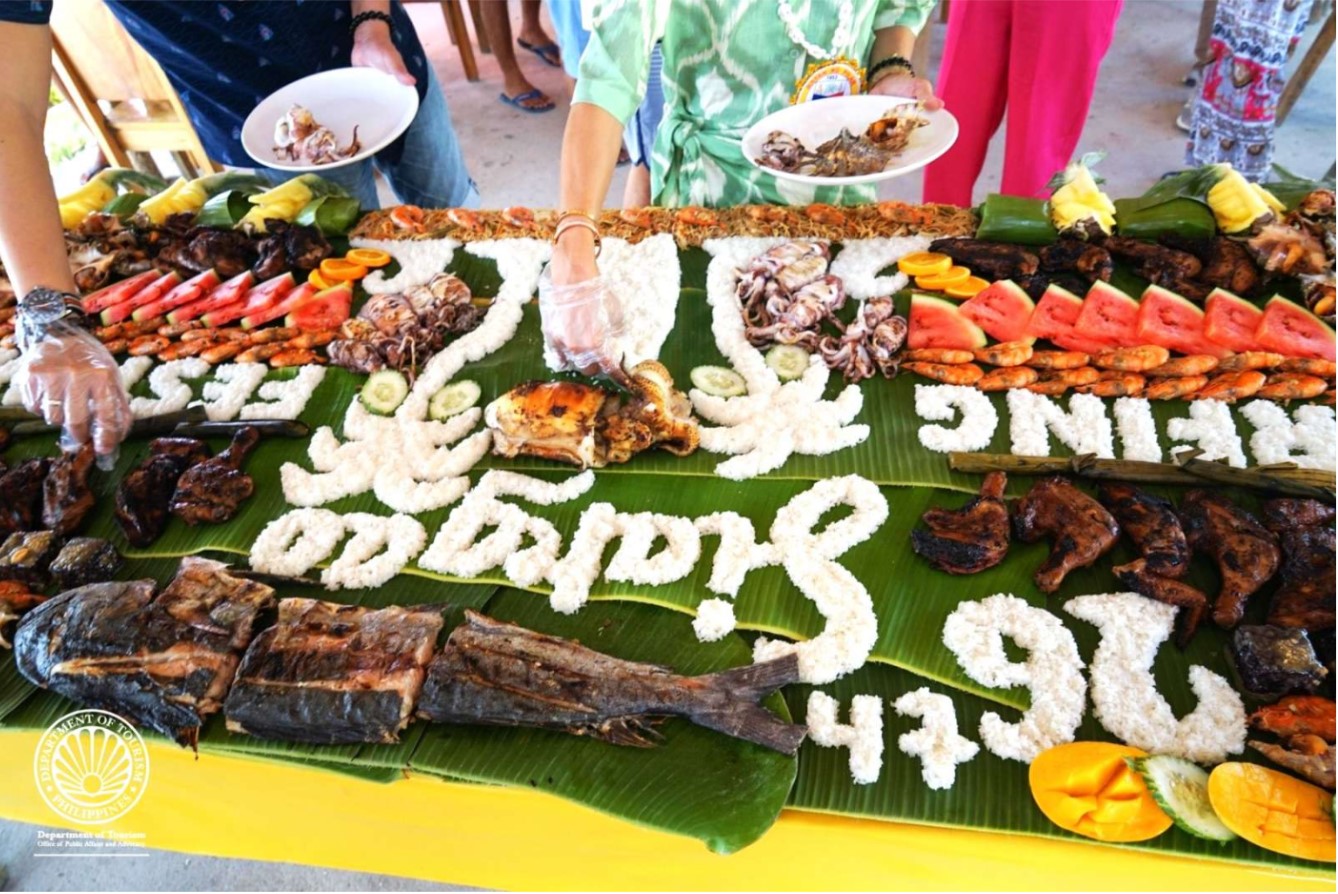
Mouth-watering authentic Filipino Food served in Filipino cuisine restaurants.
With more than 7,000 islands, travelers can expect a ton of delicious and colorful dishes and gastronomic adventures.
Did you know that each day there is one fiesta celebrated in the Philippines? Either in a province, city, municipality, or even barangay or village. Fiestas are a major event in the country and a time for people to come together to celebrate their faith, culture, and community.
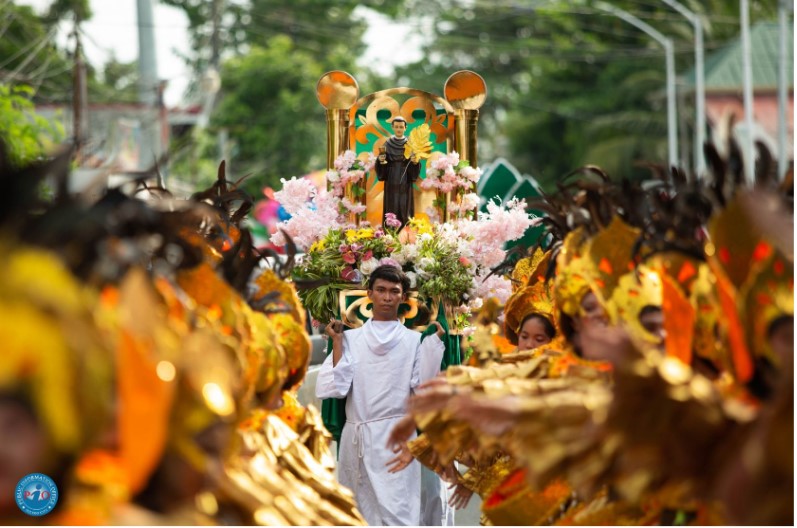
Religious festivals and old churches are also tourist attractions in different parts of country.
Fiestas are usually held in honor of the town's patron saint. The festivities typically start with a religious procession, followed by a week of activities such as street dancing, beauty pageants, concerts, and food fairs.
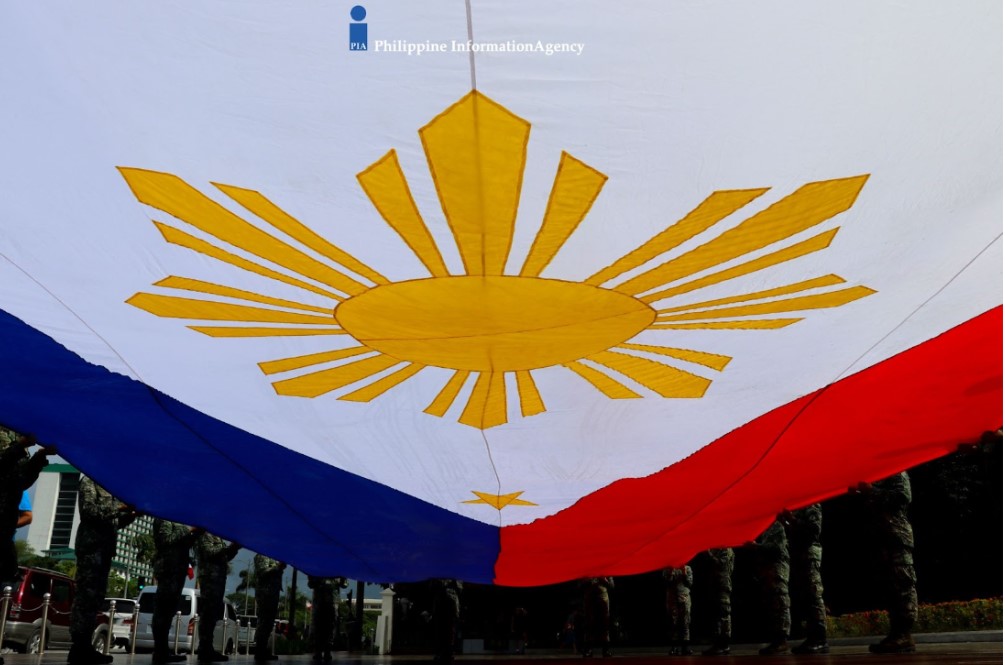
The Philippines is a land of rich natural beauty and cultural diversity. From the ancient walls of Intramuros in Manila to the revolving tower restaurant in Pasig City, to the white-sand beach of Manila Bay, there is something for everyone to love in the Philippines.
The country is also home to a vibrant culture that is a blend of Malay, Chinese, Spanish, and American influences.
But the Philippines is more than just a beautiful place to visit. It is also a country with a rich history and a proud people. The Philippines has been through a lot in its history, but it has always emerged stronger. The Filipino people are known for their resilience, their hospitality, and their love of life.
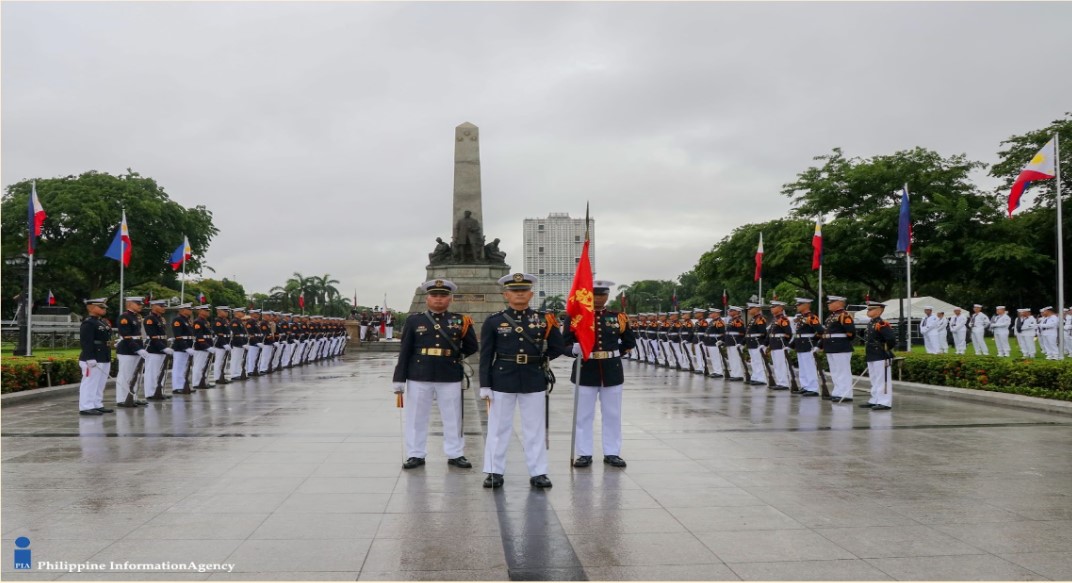
“There is so much more to the Philippines than the fun and adventure that we have so far articulated to the world. Fore the Philippines is a powerhouse of mega biodiversity, being only one of 18 mega biodiverse countries in the world. A deep well of culture and history, a profound burst and taste of flavor and gastronomy, a tapestry of indigenous peoples and creative communities whose work of their hands have safeguarded the dignity and integrity of the Filipino identity,” Sec. Frasco said. (PIA-NCR)
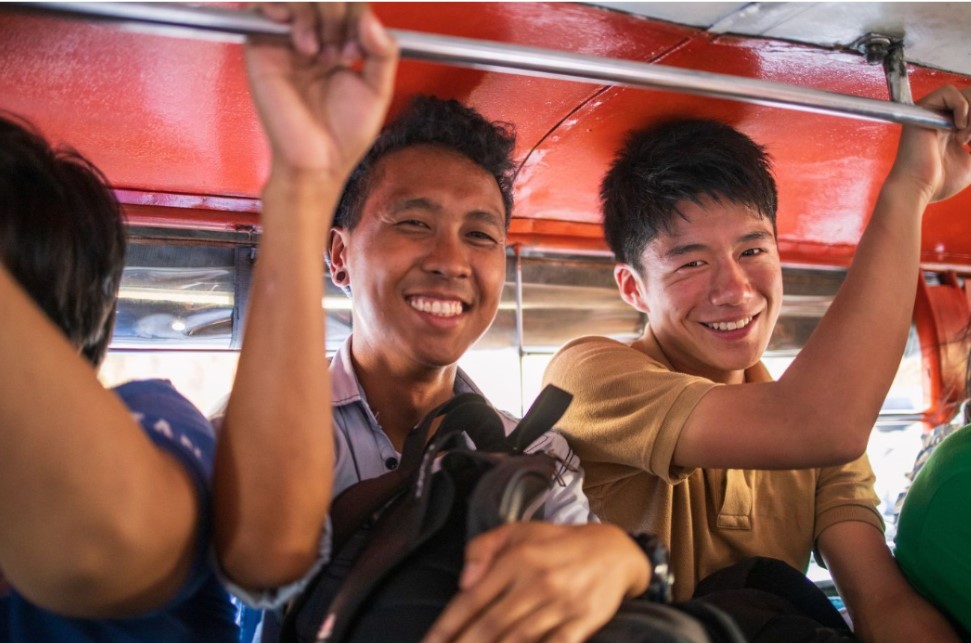
Photos by Darwin Gernale / DOT / Canva / The Philippines FB
- LoveThePhilippinres
About the Author
Kate Shiene Austria
Information Officer III
Information Officer III under the Creative and Production Services Division of the Philippine Information Agency.
Related Articles
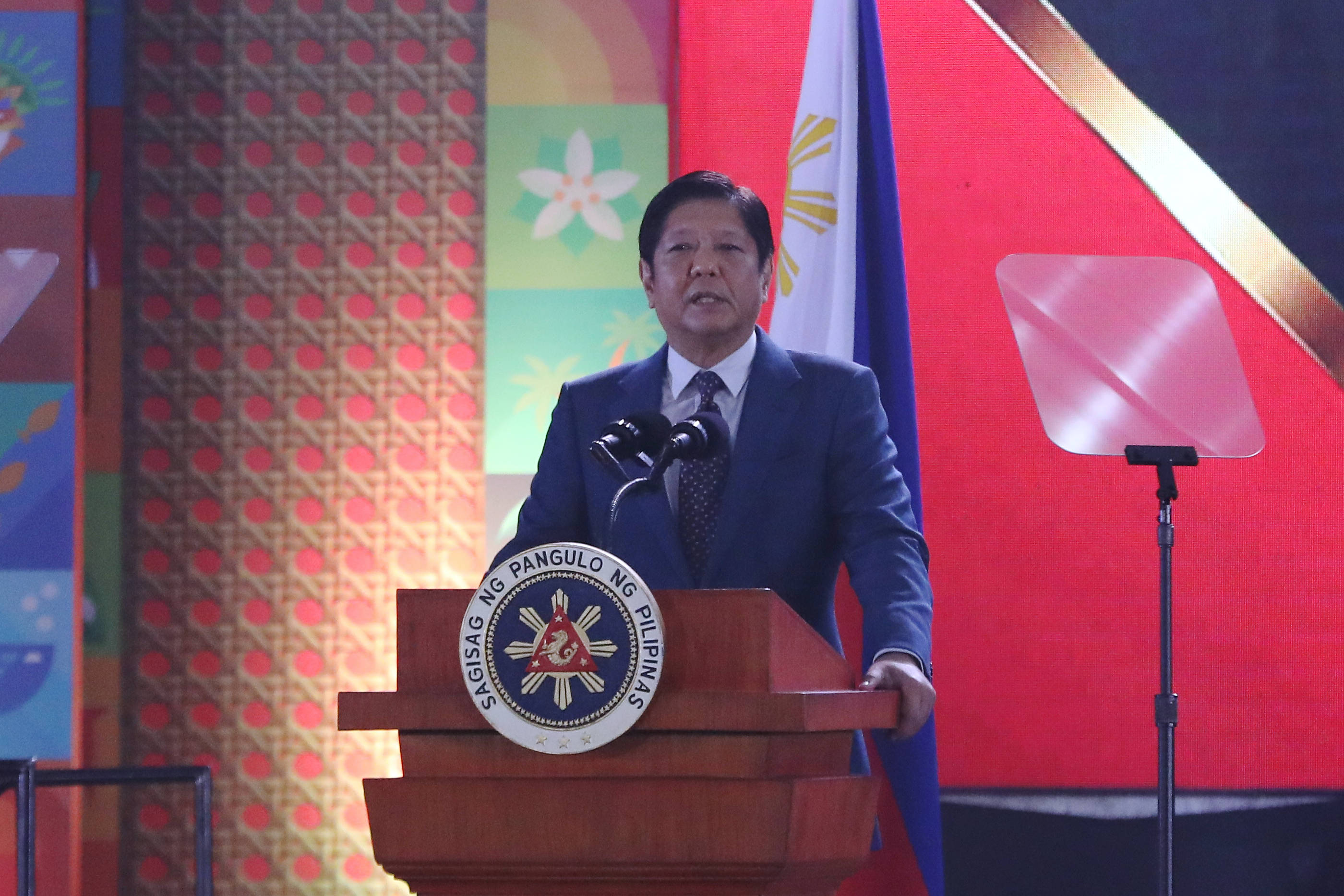
PBBM calls on Filipinos to be PH ‘tourism ambassadors,’ ‘top influencers; launches new tourism campaign slogan
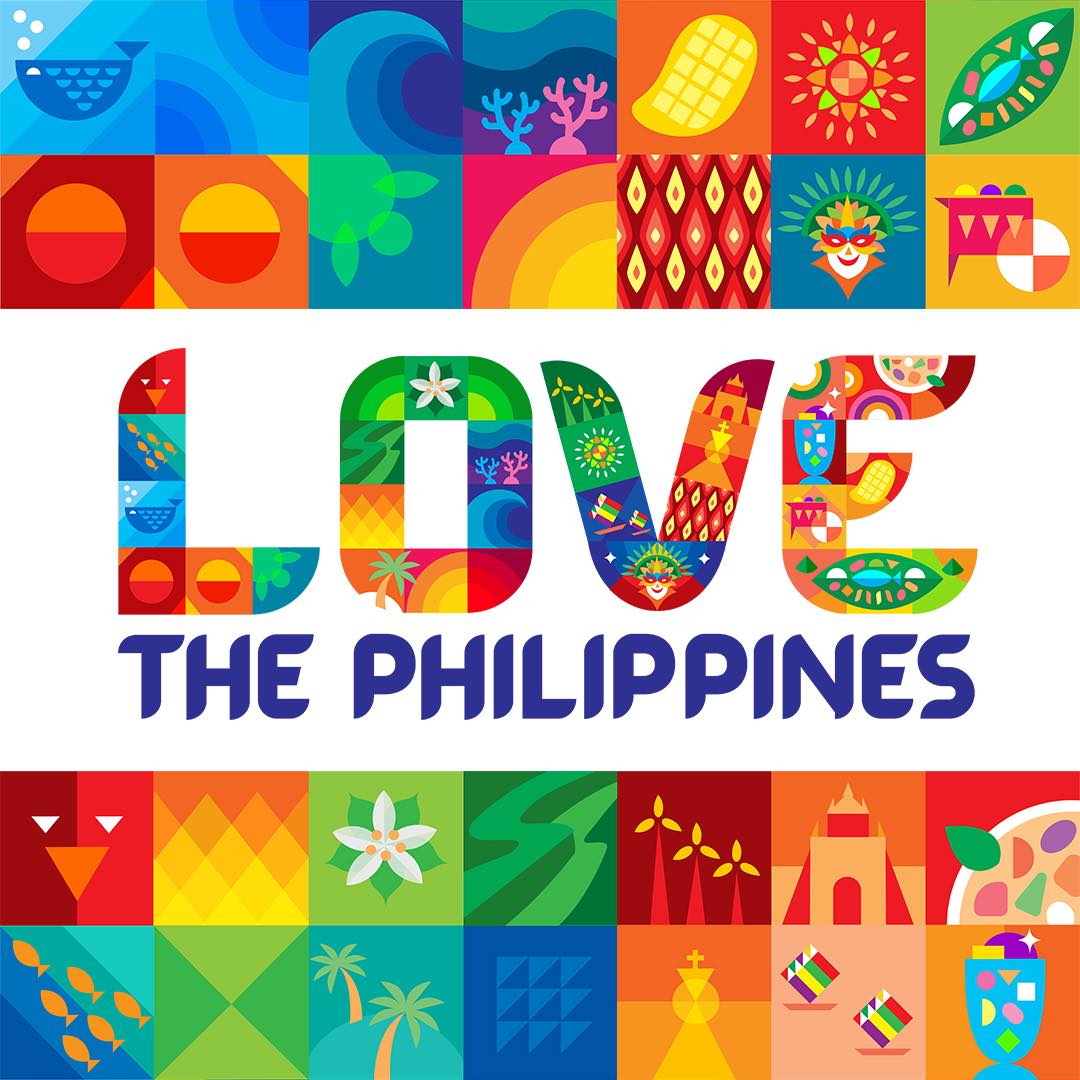
Love the Philippines, unveiling a mosaic of distinctiveness and new tourism opportunities
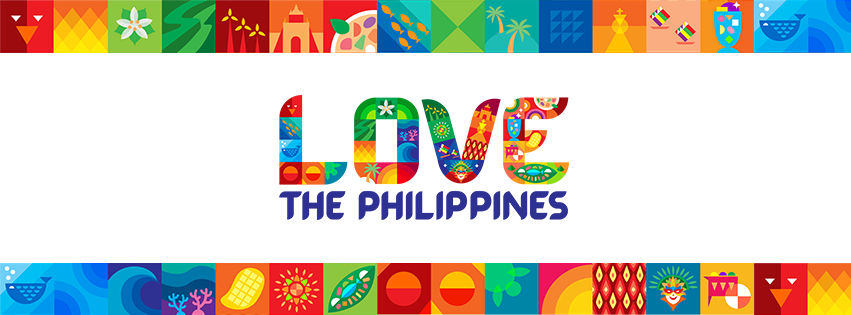
DOT unveils 'Love the Philippines' Campaign
Related news.
- Most Viewed
- Trending Features
- Archived Features
Feedback / Comment
Get in touch, philippine information agency.
The Philippine Information Agency is the official public information arm of the Government of the Republic of the Philippines. The PIA works with the Office of the President, national government agencies, and other public sector entities in communicating their programs, projects, and services to the Filipino people. The agency has a regional office in all 16 regions and has an information center in 78 provinces across the Philippines.

Government Links
- The President
- Presidential Communications Office
- APO Production Unit, Inc.
- Bureau of Communications Services
- Freedom of Information
- People's Television Network, Inc.
- Philippine Broadcasting Services
- Philippine News Agency
- Presidential Broadcast Staff - Radio Television Malacañang
- Office of the Vice President
- Supreme Court
- Senate of the Philippines
- House of Representatives
+63 2 8 926 5129

Republic of the Philippines
All content is in the public domain unless otherwise stated.
- Subscribe Now
Can new tourism slogan ‘Love the Philippines’ go beyond ‘more fun’?
Already have Rappler+? Sign in to listen to groundbreaking journalism.
This is AI generated summarization, which may have errors. For context, always refer to the full article.
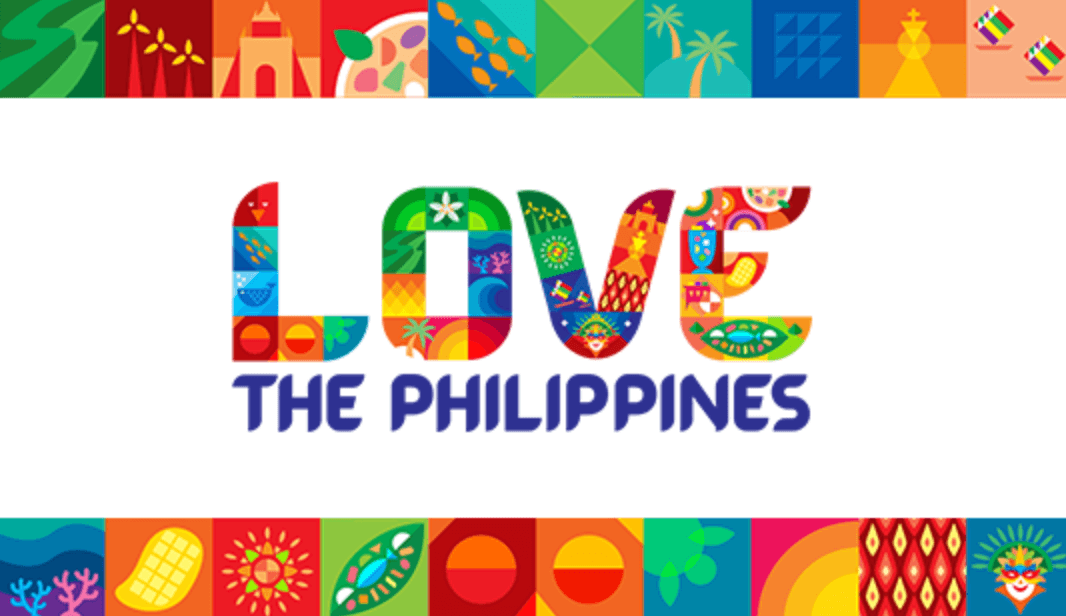
MANILA, Philippines – The Department of Tourism (DOT) retired the popular slogan “It’s more fun in the Philippines” after over a decade of viral campaigns, as Southeast Asian countries compete to lure millions of tourists in the mood for a revenge spending spree.
On Tuesday, June 27, Tourism Secretary Christina Garcia-Frasco unveiled the country’s new slogan: “Love the Philippines.”
Frasco said the rebranding is a timely response to the changing demands of the industry and shifting tourist preferences amid the pandemic.
“We are now in the process of enhancing; there are so many aspects of Philippine tourism that go beyond fun,” Frasco said.
Marie Adriano of DDB Group Philippines, the DOT’s partner for the campaign, said trends also point to going beyond leisure.
“Love is the positive theme they (tourists) associate with our country, frequently mentioned in high volumes globally. And while fun remains a positive thing…there’s less volume of mentions,” Adriano said.
‘More fun’ legacy
Frasco acknowledged that the “It’s more fun in the Philippines” campaign launched in 2012 was a success, adding that she will build on her predecessors’ work to further push the country as a premier tourism destination.
The old slogan, while simple, banked on Filipinos’ high social media usage and the rise of memes.
The DOT, then headed by the late Ramon Jimenez Jr., encouraged people to create their own campaigns by providing them with the right fonts and logos.
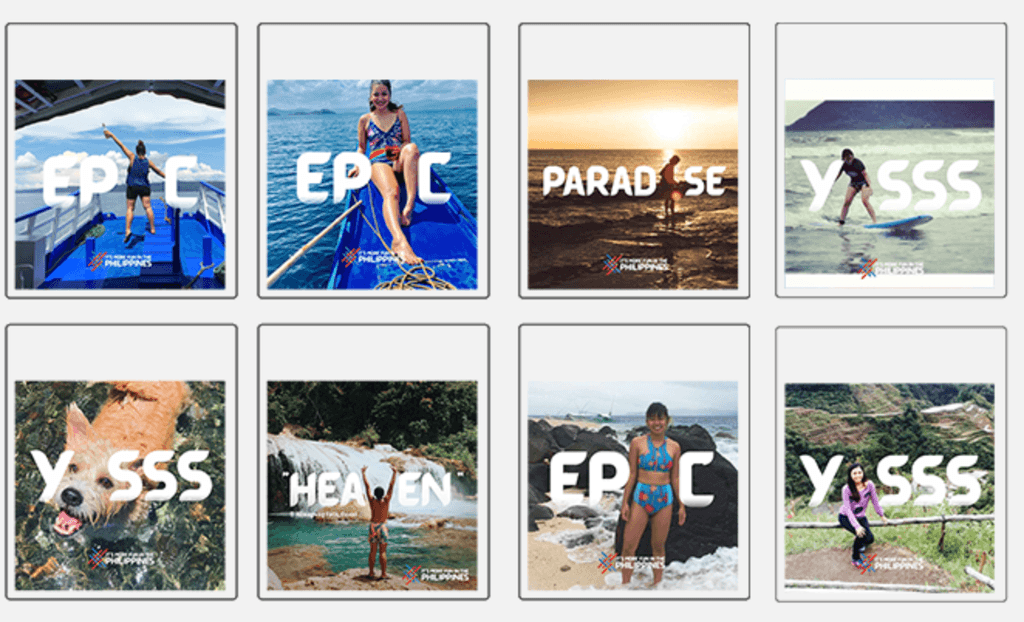
Filipinos reacted negatively at first, since the “WOW Philippines” brand which started in 2002 was already well-known.
But the rebranding came at a time when social media was taking off. BBDO Guerrero, the advertising agency behind the slogan, banked on Filipinos’ creativity and humor, as well as their ability to make memes go viral on social media.
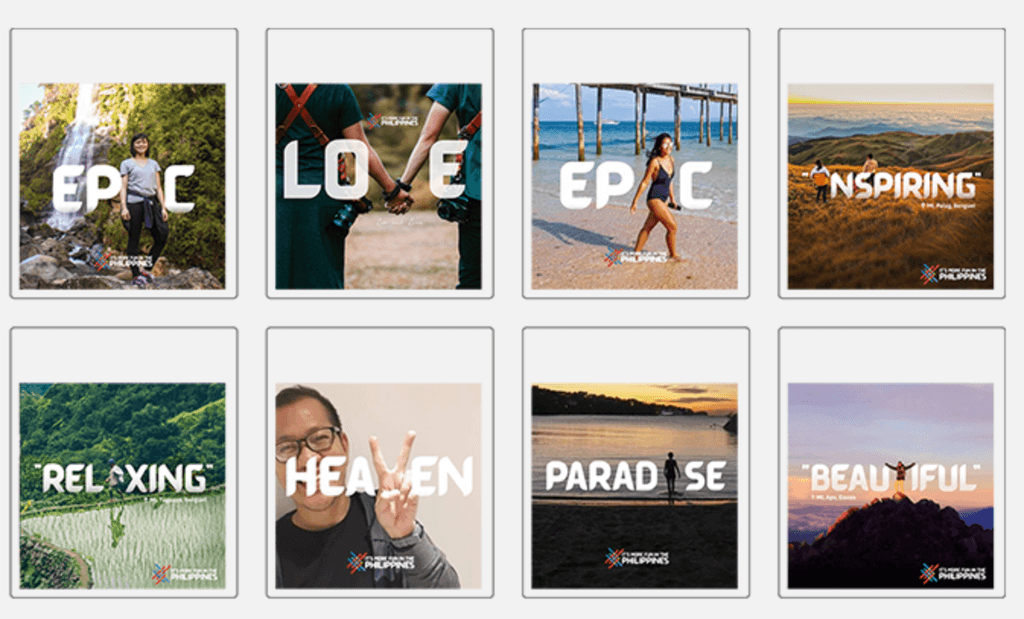
In 2017, then-tourism secretary Wanda Teo planned to scrap “It’s more fun in the Philippines” and replace it with “Experience Philippines.” But the tourism branding video was widely criticized, with people saying it was similar to a South African tourism ad . McCann Worldgroup Philippines took full responsibility for the video but said it did not intend to plagiarize others’ work.
Former tourism secretary Bernadette Romulo-Puyat retained the “more fun” campaign when she was appointed DOT chief mid-2018 .
Last May, the government drew flak for using the tagline “We give the world our best” in an advertisement seen on a bus in the United Kingdom. The ad showed Filipino-British nurse May Parsons, who administered the world’s first approved and fully tested COVID-19 vaccine.
Frasco defended the slogan, which came from the Office of the Presidential Adviser on Creative Communications, while also clarifying that it was not the Philippines’ new tourism slogan.
“We don’t want to commodify our people, and we don’t want to be tagged as a labor-exporting country,” Senator Nancy Binay said at the time.
‘We don’t want to commodify our people’: Binay urges DOT to keep ‘fun in PH’ brand
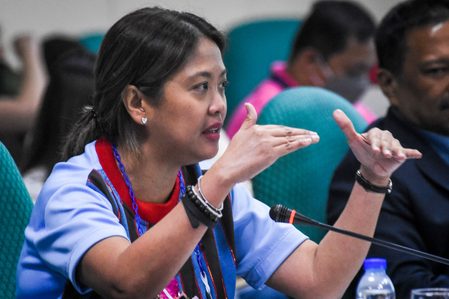
Not just the Philippines
Back in February, Hong Kong launched its massive publicity campaign “Hello Hong Kong” to position itself as a more approachable destination. It then gave away half a million plane tickets a month after the slogan launch.
Singapore, which has used “Your Singapore,” also changed its slogan to “Passion Made Possible” in a bid to cater to all types of tourists.
Thailand retained “Amazing Thailand,” but created more ad campaigns branded as “Amazing New Chapters” to build on the current branding. – Rappler.com
Add a comment
Please abide by Rappler's commenting guidelines .
There are no comments yet. Add your comment to start the conversation.
How does this make you feel?
Related Topics

Recommended Stories
{{ item.sitename }}, {{ item.title }}, department of tourism, new siargao-dinagat sea route promises to bolster caraga tourism, economy.

DOT sees Siargao Island leading Caraga’s Holy Week tourism resurgence
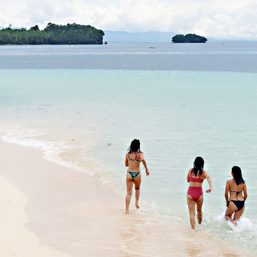
TIMELINE: The Chocolate Hills resort controversy
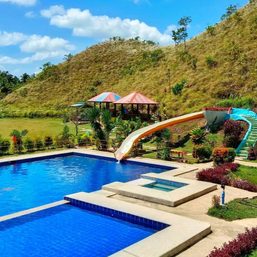
How messy governance, paperwork allowed a resort in Chocolate Hills
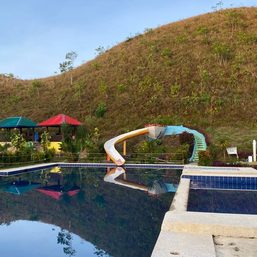
Bohol town revokes Chocolate Hills resort’s business permit
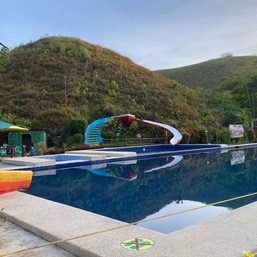
Checking your Rappler+ subscription...
Upgrade to Rappler+ for exclusive content and unlimited access.
Why is it important to subscribe? Learn more
You are subscribed to Rappler+
By providing an email address. I agree to the Terms of Use and acknowledge that I have read the Privacy Policy .

DOT’s new tourism slogan to feature PH as ‘treasure trove’ of culture, history

Department of Tourism Sec. Christina Frasco at the Kapihan sa Manila Bay, May 24, 2023. (Photo by RYAN LEAGOGO / iNQUIRER.net)
MANILA, Philippines — The Department of Tourism (DOT) on Wednesday said that its new tourism slogan – which will focus more on showcasing the country as a “treasure trove” of culture and history — is still under development.
The campaign will succeed the current “It’s More Fun in the Philippines” slogan, which was launched back in 2012.
“We’re grateful for the gains that have been made by the previous administrations in terms of pushing for the existing slogan,” Tourism Secretary Cristina Frasco said in the public forum Kapihan sa Manila Bay.
“But at the same time we would like to give our country an opportunity to reintroduce itself to the world not just as a fun destination, which it will continue to be, but also as a treasure trove of culture, of heritage, of history, of love and warmth and the sheer talent of our artisans, makers, small and medium enterprises, as well as the burning private place of our fellow Filipinos regionally,” she added.
“The stories of Filipinos have yet to be told in full, and we intend to do that with an enhanced branding campaign,” Frasco added.
According to Frasco, the DOT is still conducting a “white market study” on the existing tourism campaign and is still in the process of enhancing the campaign — which she stressed would not be launched without consulting stakeholders.
“So this is literally in the works right now,” said Frasco.
However, Frasco clarified that the country’s tourism would not hinge on the DOT’s branding campaign alone, highlighting the importance of product development and improving aspects of the Philippine tourism industry, especially when compared to its neighbors in Southeast Asia.
She also recognized the necessity of tourism investments, reiterating that the country remains open for such, especially after President Ferdinand Marcos Jr. opened the country to investment and pledges.
RELATED STORY
Dot to launch ‘enhanced tourism slogan’ soon.
Subscribe to our daily newsletter
Disclaimer: Comments do not represent the views of INQUIRER.net. We reserve the right to exclude comments which are inconsistent with our editorial standards. FULL DISCLAIMER
© copyright 1997-2024 inquirer.net | all rights reserved.
We use cookies to ensure you get the best experience on our website. By continuing, you are agreeing to our use of cookies. To find out more, please click this link.
Destination Branding Slogans and their Impact on Tourist Arrivals: The Case of the Philippines
- First Online: 28 November 2021
Cite this chapter

- Reil G. Cruz 9 &
- Joy Sheelah B. Era 10
Part of the book series: Palgrave Studies of Marketing in Emerging Economies ((PSMEE))
739 Accesses
This chapter presents a review of the evolving concept of destination branding and related concepts. In particular, this chapter looks at the impact of destination brand slogans on tourist arrivals, using the Philippines as a case study. A historical account of the country’s destination brand slogans from 1973 to 2020 is presented. Also, the effectiveness of the brand slogans is examined by looking at tourist arrivals during the years each slogan was implemented.
This is a preview of subscription content, log in via an institution to check access.
Access this chapter
- Available as PDF
- Read on any device
- Instant download
- Own it forever
- Available as EPUB and PDF
- Compact, lightweight edition
- Dispatched in 3 to 5 business days
- Free shipping worldwide - see info
- Durable hardcover edition
Tax calculation will be finalised at checkout
Purchases are for personal use only
Institutional subscriptions
Aaker, D., & Joachimsthaler, E. (2000). The brand relationship spectrum: The key to the brand architecture challenge. California Management Review, 42 (4), 8–23. https://doi.org/10.1177/000812560004200401
Google Scholar
Adeyinka-Ojo, S., & Nair, V. (2016, May 11–13). Destination branding framework in tourism research: A state-of-the-art analysis [Conference paper]. 14th APacCHRIE Conference, Bangkok, Thailand. https://www.researchgate.net/publication/303330884_Destination_Branding_Framework_in_Tourism_Research_A_State-of-the-Art_Analysis
Almeyda-Ibañez, M., & George, B. P. (2017). The evolution of destination branding: A review of branding literature in tourism. Journal of Tourism, Heritage & Services Marketing, 3 (1), 9–17. https://doi.org/10.5281/zenodo.401370
Article Google Scholar
Alpad, C. (2016, October 8). Still fun, but change is coming. The Sunday Times Magazine . https://www.manilatimes.net/2016/10/08/weekly/the-sunday-times/still-fun-change-coming/290120/
Bae, S., Jung, T. H., Moorhouse, N., Suh, M., & Kwon, O. (2020). The influence of mixed reality on satisfaction and brand loyalty in cultural heritage attractions: A brand equity perspective. Sustainability, 12 (7), 2956. https://doi.org/10.3390/su12072956
Bellman, E. (2001, August 7). Philippines struggles to find catchy slogan for tourism. The Wall Street Journal . https://www.wsj.com/articles/SB997204075671312135#:~:text=The%20Philippines%20has%20run%20the,for%20the%20past%20five%20years
Bianchi, C., Pike, S., & Lings, I. (2014). Investigating attitudes towards three South American destinations in an emerging long haul market using a model of consumer-based brand equity (cbbe). Tourism Management, 42 (2), 15–23. https://doi.org/10.1016/j.tourman.2013.11.014
Boo, S., Busser, J., & Baloglu, S. (2009). A model of customer-based brand equity and its application to multiple destinations. Tourism Management, 30 (2009), 219–231. https://doi.org/10.1016/j.tourman.2008.06.003
Cai, L. A. (2002). Cooperative branding for rural destinations. Annals of Tourism Research, 29 (3), 720–742. https://doi.org/10.1016/S0160-7383(01)00080-9
Castañeda-Garcia, J. A., Frías-Jamilena, D. M., Del Barrio-García, S., & Rodríguez-Molina, M. A. (2020). The effect of message consistency and destination-positioning brand strategy type on consumer-based destination brand equity. Journal of Travel Research, 59 (8), 1447–1463. https://doi.org/10.1177/0047287519881506
Chigora, F., & Zvavahera, P. (2015). Awareness completes brand loyalty: Reality of Zimbabwe tourism destination. Business and Management Horizons, 3 (2), 60–69. https://doi.org/10.5296/bmh.v3i2.8547
Clift, J. (2014, November 7). Warc 100: Why it’s more fun in the Philippines. Warc . https://www.warc.com/newsandopinion/opinion/warc-100-why-its-more-fun-in-the-philippines/1879
Cruz, R. G. (2008). Principles of travel and tourism . Unpublished manuscript.
De La Cruz, C. I. (2017, June 9). Do you remember these Department of Tourism slogans? Spot . https://www.spot. ph/newsfeatures/the-latest-news-features/70411/department-of-tourism-slogans- a00171-20170609
Do not change ‘It’s more fun in the Philippines’, Ejercito tells DOT. (2017, June 13). ABS-CBN News . https://news.abs-cbn.com/news/06/13/17/do-not-change-its-more-fun-in-the-philippines-ejercito-tells-dot
Dyankov, T., Krastev, V., & Yancheva, K. (2018). Evaluation of brand identity of Bulgaria as a tourist destination. Tourism: An International Interdisciplinary Journal, 66 (1), 19–34. https://hrcak.srce.hr/197380
Galí, N., Camprubi, R., & Donaire, J. A. (2016). Analysing tourism slogans in top tourism destinations. Journal of Destination Marketing & Management, 6 (3), 243–251. https://doi.org/10.1016/j.jdmm.2016.04.004
Garcia, J. A., Gómez, M., & Molina, A. (2012). A destination-branding model: An empirical analysis based on stakeholders. Tourism Management, 33 (2012), 646–661. https://doi.org/10.1016/j.tourman.2011.07.006
Hanna, S., & Rowley, J. (2011). Towards a strategic place brand-management model. Journal of Marketing Management, 27 (5–6), 458–476. https://doi.org/10.1080/02672571003683797
Harish, R. (2010). Brand architecture in tourism branding: The way forward for India. Journal of Indian Business Research, 2 (3), 153–165. https://doi.org/10.1108/17554191011069442
How It’s more fun in PH slogan fared from 2012 to 2016. (2016, November 24). ABS-CBN Investigative and Research Group. https://news.abs-cbn.com/focus/11/24/16/how-its-more-fun-in-ph-slogan-fared-from-2012-to-2016
Hsu, C., & Cai, L. A. (2009, July 31). Brand knowledge, trust and loyalty—A conceptual model of destination branding. International CHRIE Conference-Refereed Track . https://scholarworks.umass.edu/cgi/viewcontent.cgi?article=1110&context=refereed
Kaur, K. (2019, July 23). 1990 to 2020 the history of Visit Malaysia logos. The Rakyat Post . https://www.therakyatpost.com/2019/07/23/1990-to-2020-the-history-of-visit-malaysia-logos/
Kim, H., & Lee, T. J. (2018). Brand equity of a tourist destination. Sustainability, 10 (2), 431. https://doi.org/10.3390/su10020431
Kotler, P. (1999). Kotler on marketing: How to create, win and dominate markets . Free Press. https://www.researchgate.net/publication/265069529_Kotler_on_Marketing_How_to_Create_Win_and_Dominate_Markets
Kotler, P. (2016). Branding: From purpose to beneficence. The Marketing Journal . https://www.marketingjournal.org/brand-purpose-to-beneficence-philip-kotler/
Kotler, P., & Sarkar, C. (2017). Finally brand activism! The Marketing Journal . https://www.marketingjournal.org/finally-brand-activism-philip-kotler-and-christian-sarkar/
Listiana, E. (2015). Country of origin image and its impact on brand Association, perceived quality and brand loyalty. Journal of Marketing and Consumer Research, 10 (2015), 19–29. https://citeseerx.ist.psu.edu/viewdoc/download?doi=10.1.1.877.7916&rep=rep1&type=pdf
Lopez, E. C. (2019, February 19). Meet the 25-year-old designer behind the DOT’s ‘Barabara’ font. Esquire . https://www.esquiremag.ph/culture/lifestyle/dot-barabara-font-designer-a00290-20190219
Lund, N. F., Cohen, S. A., & Scarles, C. (2018). The power of social media storytelling in destination branding. Journal of Destination Marketing & Management, 8 , 271–280. https://doi.org/10.1016/j.jdmm.2017.05.003
Makabenta, Y. (2017, June 20). Three times, DOT copied tourism campaigns of other states. The Manila Times . https://www.manilatimes.net/2017/06/20/opinion/columnists/topanalysis/three-times-dot-copied-tourism-campaigns-states/333679/
Mlambo, S. S., & Ezeuduji, I. O. (2020). South Africa’s Kwazulu-Natal tourism destination brand essence and competitiveness: Tourists’ perspectives. GeoJournal of Tourism and Geosites, 32 (4), 1195–1201. https://doi.org/10.30892/gtg.32401-557
Moilanen, T., & Rainisto, S. (2009). How to brand nations, cities and destinations: A planning book for place branding (1st ed.). Palgrave Macmillan. https://www.academia.edu/10219180/How_to_brand_nations
Book Google Scholar
‘More fun in the Ph’ slogan soon to be history. (2016, September 5). Coconuts Manila . https://coconuts.co/manila/news/more-fun-ph-slogan-soon-be-history/
Pan, S. (2019). Tourism slogans—Towards a conceptual framework. Tourism Management, 72 (2019), 180–191. https://doi.org/10.1016/j.tourman.2018.11.023
Perkins, R., Khoo-Lattimore, C., & Arcodia, C. (2020). Understanding the contribution of stakeholder collaboration towards regional destination branding: A systematic narrative literature review. Journal of Hospitality and Tourism Management, 43 (2020), 250–258. https://doi.org/10.1016/j.jhtm.2020.04.008
Pike, S. D. (2004). Destination brand positioning slogans—Towards the development of a set of accountability criteria. Acta Turistica, 16 (2), 102–124. http://eprints.qut.edu.au/
Qu, Y., Cao, L., & Xu, F. (2021). Design of an attention-grabbing destination slogan using the attenuation model. Journal of Destination Marketing & Management, 19 (2021) https://doi.org/10.1016/j.jdmm.2020.100415
Rey, A. (2019, February 18). ‘It’s more fun in the Philippines’ gets new font. Rappler. https://www.rappler.com/business/its-more-fun-philippines-new-font
Richter, L. (1989). The Philippines: The politicization of tourism. In L. A. Richter (Ed.), The politics of tourism in Asia (pp. 57–91). University of Hawaii Press. https://doi.org/10.2307/j.ctv9zcjr9.7
Chapter Google Scholar
Rocamora, J. (2019, 18 February), PH launches refreshed tourism slogan. Philippine News Agency . https://www.pna.gov.ph/articles/1062242
Ruiz-Real, J. L., Uribe-Toril, J., & Gázquez-Abad, J. C. (2020). Destination branding: Opportunities and new challenges. Journal of Destination Marketing & Management, 17 (2020), 100453. https://doi.org/10.1016/j.jdmm.2020.100453
Saqib, N. (2020). Positioning—A literature review, PSU Research Review , Vol. ahead-of-print No. ahead-of-print. https://doi.org/10.1108/PRR-06-2019-0016
Séraphin, H., Zaman, M., Olver, S., Bourliataux-Lajoinie, S., & Dosquet, F. (2019). Destination branding and overtourism. Journal of Hospitality and Tourism Management, 38 (2019), 1–4. https://doi.org/10.1016/j.jhtm.2018.11.003
Tan, L., & de Guzman, C. (2018, May 8). Tourism Secretary Wanda Tulfo-Teo resigns ‘out of delicadeza. CNN Philippines . https://cnnphilippines.com/news/2018/05/08/Duterte-Tourism-Secretary-Wanda-Teo-resign-Tulfo.html
TAT promotes “Amazing Thailand Campaign” 1998–1999 through international phonecards. (1997, July 14). https://www.ryt9.com/en/prg/1690
Tran, V. T., Nguyen, N. P., Tran, P. T. K., Tran, T. N., & Huynh, T. T. P. (2019). Brand equity in a tourism destination: A case study of domestic tourists in Hoi An City, Vietnam. Tourism Review, 74 (3), 704–720. https://doi.org/10.1108/TR-08-2017-0130
Valdez, P. N. M., Tupas, R., & Tan, N. C. (2017). “It’s more fun in the Philippines”: Resemiotizing and commodifying the local in tourism discourse. Discourse, Context & Media, 20 , 132–145. https://doi.org/10.1016/j.dcm.2017.09.002
Villegas, V. (2017). Building a successful tourism brand for the Philippines and the struggle with destination image and tourism slogans. Luz Y Saber, 11 (1), 62–79. https://research-manila.letran.edu.ph/read/111
Visitor arrivals to the Philippines . (2008–2020). Department of Tourism. http://tourism.gov.ph/tourism_dem_sup_pub.aspx
Why Philippines is called Pearl of the Orient Seas. (2012, January 11). Come Visit Fun Philippines. http://www.strawhatjp.com/why-philippines-is-called-pearl-of-the-orient-seas/
World Tourism Organization & European Travel Commission. (2009). Handbook on tourism destination branding .
World Travel and Tourism Council. (2020). Travel and tourism global economic impact and trends. https://wttc.org/Portals/0/Documents/Reports/2020/Global%20Economic%20Impact%20Trends%202020.pdf?ver=2021-02-25-183118-360
Download references
Author information
Authors and affiliations.
University of the Philippines Asian Institute of Tourism, Quezon City, Philippines
Reil G. Cruz
Institute of Tourism and Hotel Management, Far Eastern University, Manila, Philippines
Joy Sheelah B. Era
You can also search for this author in PubMed Google Scholar
Corresponding author
Correspondence to Reil G. Cruz .
Editor information
Editors and affiliations.
University of Cape Coast, Cape Coast, Ghana
Ishmael Mensah
Taylor’s University, Selangor, Malaysia
Kandappan Balasubramanian
Universiti Teknologi MARA, Selangor, Malaysia
Mohd Raziff Jamaluddin
University of Santo Tomas–Legazpi, Manila, Philippines
Gina Alcoriza
Universitas Pendidikan Indonesia, Bandung, Indonesia
Vanessa Gaffar
S. Mostafa Rasoolimanesh
Rights and permissions
Reprints and permissions
Copyright information
© 2022 The Author(s), under exclusive license to Springer Nature Switzerland AG
About this chapter
Cruz, R.G., Era, J.S.B. (2022). Destination Branding Slogans and their Impact on Tourist Arrivals: The Case of the Philippines. In: Mensah, I., Balasubramanian, K., Jamaluddin, M.R., Alcoriza, G., Gaffar, V., Rasoolimanesh, S.M. (eds) Marketing Tourist Destinations in Emerging Economies. Palgrave Studies of Marketing in Emerging Economies. Palgrave Macmillan, Cham. https://doi.org/10.1007/978-3-030-83711-2_11
Download citation
DOI : https://doi.org/10.1007/978-3-030-83711-2_11
Published : 28 November 2021
Publisher Name : Palgrave Macmillan, Cham
Print ISBN : 978-3-030-83710-5
Online ISBN : 978-3-030-83711-2
eBook Packages : Business and Management Business and Management (R0)
Share this chapter
Anyone you share the following link with will be able to read this content:
Sorry, a shareable link is not currently available for this article.
Provided by the Springer Nature SharedIt content-sharing initiative
- Publish with us
Policies and ethics
- Find a journal
- Track your research
DOT Unveils New Tourism Slogan: “Love the Philippines”

The Department of Tourism (DOT) has revealed the country’s “enhanced” tourism campaign slogan, “Love the Philippines,” marking the end of the 11-year-old slogan “It’s More Fun in the Philippines.” Speaking at the launch event during the DOT’s 50th-anniversary celebration, Tourism Secretary Christina Frasco emphasized the significance of the campaign as a call to action for Filipinos.
“Love the Philippines is not a mere branding campaign, but rather a call to action to every Filipino citizen to remember the beauty of our country, to honor our past, and to look forward to the future armed with the virtues, (and) values of being a Filipino,” Frasco said.
Marie Adriano, a strategic planner from marketing firm DDB Group Philippines, highlighted the positive association of “love” with the Philippines among global travelers and the evolving preferences of the modern tourist.
“Coming from a culture shift, naturally, changes in the consumers follow. Who are they? We call them the ‘changed traveler’ for the very reason that traveling has come to mean more than just leisure,” Adriano explained.
The DOT aims to capture the attention of these “changed travelers” by offering real-world experiences and curated activities that go beyond traditional leisure. The retention of the iconic “Barabara” type font from the previous campaign will ensure continuity and recognition worldwide.
Tourism Secretary Frasco expressed optimism about the campaign’s ability to sustain interest in the Philippines and showcase its diverse offerings. She stated, “We will continue to market the Philippines as fun all over the world, but we will also articulate that the Philippines has so much more to offer.”
The new slogan, “Love the Philippines,” aims to highlight the nation’s natural assets, rich history, cultural heritage, and unique flavors.
(Source: PNA)

Justin Aguilar
Related articles.
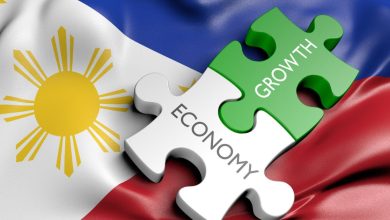
PH ranks 28th among world’s largest GDP based on purchasing power parity
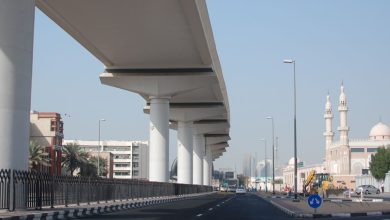
Dubai alerts on traffic delays on Oud Metha Road

No Filipinos injured in recent Taiwan quakes, says DMW

DMW: No OFWs hurt in Jeddah building collapse incident
Privacy overview.
New PH tourism slogan must be aligned with 'country brand': DOT official

ADVERTISEMENT
Now boarding: Faces, places, and trends shaping tourism in 2024
After falling by 75 percent in 2020, travel is on its way to a full recovery by the end of 2024. Domestic travel is expected to grow 3 percent annually and reach 19 billion lodging nights per year by 2030. 1 Unless otherwise noted, the source for all data and projections is Oxford Economics. Over the same time frame, international travel should likewise ramp up to its historical average of nine billion nights. Spending on travel is expected to follow a similar trajectory, with an estimated $8.6 trillion in traveler outlays in 2024, representing roughly 9 percent of this year’s global GDP.
About the authors
This article is a collaborative effort by Caroline Tufft , Margaux Constantin , Matteo Pacca , and Ryan Mann , with Ivan Gladstone and Jasperina de Vries, representing views from McKinsey’s Travel, Logistics & Infrastructure Practice.
There’s no doubt people still love to travel and will continue to seek new experiences in new places. But where will travelers come from, and where will they go? We developed a snapshot of current traveler flows, along with estimates for growth through 2030. For the purposes of this report, we have divided the world into four regions—the Americas, Asia, Europe, and the Middle East and Africa.
Our analysis identifies three major themes for industry stakeholders to consider:
- The bulk of travel spending is close to home. Stakeholders should ensure they capture the full potential of domestic travel before shifting their focus to international travelers. And they should start with international travelers who visit nearby countries—as intraregional trips represent the largest travel segment after domestic trips.
- Source markets are shifting. Although established source markets continue to anchor global travel, Eastern Europe, India, and Southeast Asia are all becoming fast-growing sources of outbound tourism.
- The destinations of the future may not be the ones you imagine. Alongside enduring favorites, places that weren’t on many tourists’ maps are finding clever ways to lure international travelers and establish themselves as desirable destinations.
The bulk of travel spending is close to home
International travel might feel more glamorous, but tourism players should not forget that domestic travel still represents the bulk of the market, accounting for 75 percent of global travel spending (Exhibit 1). Domestic travel recovered from the COVID-19 pandemic faster than international travel, as is typical coming out of downturns. And although there has been a recent boom in “revenge travel,” with travelers prioritizing international trips that were delayed by the pandemic, a return to prepandemic norms, in which domestic travel represents 70 percent of spending, is expected by 2030.
The United States is the world’s largest domestic travel market at $1 trillion in annual spending. Sixty-eight percent of all trips that start in the United States remain within its borders. Domestic demand has softened slightly, as American travelers return abroad. 2 Dawit Habtemariam, “Domestic U.S. tourism growth levels off as Americans head overseas,” Skift, August 18, 2023. But tourism players with the right offerings are still thriving: five national parks broke attendance records in 2023 (including Joshua Tree National Park, which capitalized on growing interest from stargazers indulging in “dark sky” tourism 3 Scott McConkey, “5 national parks set attendance records in 2023, and the reasons may surprise you,” Wealth of Geeks, April 16, 2024. ).
China’s $744 billion domestic travel market is currently the world’s second largest. Chinese travelers spent the pandemic learning to appreciate the diversity of experiences on offer within their own country. Even as borders open back up, Chinese travelers are staying close to home. And domestic destinations are benefiting: for example, Changchun (home to the Changchun Ice and Snow Festival) realized 160 percent year-on-year growth in visitors in 2023. 4 Shi Xiaoji, “Why don’t Chinese people like to travel abroad anymore? The global tourism industry has lost 900 billion yuan. What is the situation?,” NetEase, February 12, 2024. In 2024, domestic travel during Lunar New Year exceeded prepandemic levels by 19 percent.
China’s domestic travel market is expected to grow 12 percent annually and overtake the United States’ to become the world’s largest by 2030. Hotel construction reflects this expectation: 30 percent of the global hotel construction pipeline is currently concentrated in China. The pipeline is heavily skewed toward luxury properties, with more than twice as many luxury hotels under construction in China as in the United States.
India, currently the world’s sixth-largest domestic travel market by spending, is another thriving area for domestic travel. With the subcontinent’s growing middle class powering travel spending growth of roughly 9 percent per year, India’s domestic market could overtake Japan’s and Mexico’s to become the world’s fourth largest by 2030. Domestic air passenger traffic in India is projected to double by 2030, 5 Murali Krishnan, “Can India’s airports cope with rapid passenger growth?,” Deutsche Welle, February 7, 2024. boosted in part by a state-subsidized initiative that aims to connect underserved domestic airports. 6 “India is seeing a massive aviation boom,” Economist , November 23, 2023.
When travelers do go abroad, they often stay close to home (Exhibit 2).
Europe and Asia, in particular, demonstrate strong and growing intraregional travel markets.
Recognizing this general trend, stakeholders have been funneling investment toward regional tourism destinations. An Emirati wealth fund, for instance, has announced its intent to invest roughly $35 billion into established hospitality properties and development opportunities in Egypt. 7 Michael Gunn and Mirette Magdy, “UAE’s $35 billion Egypt deal marks Gulf powers’ buying spree,” Bloomberg, April 27, 2024.
Europe has long played host to a high share of intraregional travel. Seventy percent of its travelers’ international trips stay within the region. Europe’s most popular destinations for intraregional travelers are perennial warm-weather favorites—Spain (18 percent), Italy (10 percent), and France (8 percent)—with limited change to these preferences expected between now and 2030.
Despite longer travel distances between Asian countries, Asia’s intraregional travel market is beginning to resemble Europe’s. Intraregional travel currently accounts for about 60 percent of international trips in Asia—a share expected to climb to 64 percent by 2030. As in Europe in past decades, Asian intraregional travel is benefiting from diminishing visa barriers and the development of a low-cost, regional flight network.
Thailand is projected to enjoy continued, growing popularity with Asian travelers. Thailand waived visa requirements for Chinese tourists in 2023 and plans to do the same for Indian tourists starting in 2024. It has aggressively targeted the fast-growing Indian traveler segment, launching more than 50 marketing campaigns directed at Indians over the past decade. The investment may be paying off: Bangkok recently overtook Dubai as the most popular city destination for Indian tourists. 8 “Bangkok overtakes Dubai as top destination for Indians post visa relaxation, reveals Agoda,” PR Newswire, January 18, 2024.
A McKinsey ConsumerWise survey on consumer sentiment, conducted in February 2024, suggests that Chinese travelers are also exhibiting high interest in international travel, with 36 percent of survey respondents indicating that they intend to spend more on international travel in the next three months. 9 Daniel Zipser, “ China brief: Consumers are spending again (outside of China) ,” McKinsey, April 8, 2024. Much of this interest is directed toward regional destinations such as Southeast Asia and Japan, with interest in travel to Europe down from previous years. 10 Guang Chen, Zi Chen, Steve Saxon, and Jackey Yu, “ Outlook for China tourism 2023: Light at the end of the tunnel ,” McKinsey, May 9, 2023.
Given travelers’ preference for proximity, how can tourism stakeholders further capitalize on domestic and intraregional travel demand? Here are a few strategies:
- Craft offerings that encourage domestic tourists to rediscover local gems. Destinations, hotels, and transportation providers can encourage domestic tourists to integrate lesser-known cultural landmarks into their trips to visit friends and relatives. In France, the upscale hotel chain Relais & Châteaux markets historic properties that lie far from classic tourist sights—such as Château Saint-Jean in rural Auvergne—as a welcome escape from the bustle of Paris. In Mexico, the Pueblos Mágicos program has successfully boosted domestic tourist visits to a set of “magical towns” that showcase Mexican heritage.
- Fold one-off domestic destinations into fuller itineraries. Route 66 in the United States is a classic road trip pathway, which spurs visits to attractions all along the highway’s length. Tourism stakeholders can collaborate to create similar types of domestic itineraries around the world. For instance, Mexico has expanded on its Pueblos Mágicos concept by branding coordinated visits to multiple villages as “magical routes.” In France, local tourism boards and vineyards have collaborated to promote bucket list “wine routes” around the country.
- Make crossing borders into neighboring countries seamless. Removing logistical barriers to travel can nudge tourists to upgrade a one-off trip to a single attraction into a bucket list journey across multiple, less-trodden destinations. In Africa, for example, Ethiopian Airlines is facilitating cross-border travel to major regional tourist sites through improved air connectivity. In Asia, Thailand has announced its intent to create a joint visa easing travel among Cambodia, Laos, Malaysia, Myanmar, Thailand, and Vietnam.
Source markets are shifting
The United States, Germany, the United Kingdom, China, and France remain the world’s five largest sources of travelers, in that order. These countries collectively accounted for 38 percent of international travel spending in 2023 and are expected to remain the top five source markets through 2030. But interest in travel is blossoming in other parts of the world—causing a shift in the balance of outbound travel flows (Exhibit 3).
North Americans’ travel spending is projected to hold steady at roughly 3 percent annual growth. US consumers voice growing concerns about inflation, and the most cost-constrained traveler segments are reducing travel, which is affecting ultra-low-cost airlines and budget hotels. Most travelers, however, plan to continue traveling: McKinsey research suggests that American consumers rank international and domestic travel as their highest-priority areas for discretionary spending. Instead of canceling their trips, these consumers are adapting their behavior by traveling during off-peak periods or booking travel further in advance. Travel spending by Europeans paints a slightly rosier picture, with roughly 5 percent projected annual growth. Meanwhile, the projected 12 percent annual growth in Chinese travelers’ spending should anchor substantial increases in travel spending across Northeast Asia.
Alongside these enduring traveler segments, new groups of travelers are emerging. Eastern Europe, India, and Southeast Asia are still comparatively small source markets, but they are developing fast-growing pools of first-time tourists (Exhibit 4).
India’s breakneck GDP growth of 6 percent year over year is bolstering a new generation of travelers, 11 Benjamin Laker, “India will grow to become the world’s third-largest economy by 2027,” Forbes , February 23, 2024. resulting in a projected annual growth in travel spending of 9 percent between now and 2030. Indian air carriers and lodging companies are making substantial investments to meet projected demand. Budget airline IndiGo placed the largest aircraft order in commercial aviation history in 2023, when it pledged to buy 500 Airbus A320 planes 12 Anna Cooban, “Biggest plane deal in history: Airbus clinches massive order from India’s IndiGo,” CNN, June 19, 2023. ; that same week, Air India nearly equaled IndiGo’s order size with purchase agreements for 250 Airbus and 220 Boeing jets. IndiGo later added an order for 30 additional Airbus A350 planes, well suited to serving both domestic and international routes. 13 “Airbus confirms IndiGo's A350 aircraft order,” Economic Times , May 6, 2024. The Indian Hotels Company Limited is ramping up its hotel pipeline, aiming to open two new hotels per month in the near future. International players are not sitting on the sidelines: seven hotel chains are launching new brands in India in 2024, 14 Peden Doma Bhutia, “Indian Hotels expansion plans: 2 new brands launching, 2 hotels opening every month,” Skift, February 2, 2024. including Marriott’s first Moxy- and Tribute-branded hotels in India and entrants from Hilton’s Curio and Tapestry brands. 15 Forum Gandhi, “Check-in frenzy: International hotel giants unleash fresh brands in India’s booming hospitality landscape,” Hindu Businessline , February 13, 2024. Development focus has shifted away from major metropolises such as Mumbai and Delhi and toward fast-developing, smaller cities such as Chandigarh and Hyderabad.
Southeast Asian travel spending is projected to grow at roughly 7 percent per year. Pockets of particularly high growth exist in Cambodia, Malaysia, and the Philippines. To capitalize on this blossoming source market, neighboring countries are rolling out attractive visa arrangements: for example, China has agreed to reciprocal visa waivers for short-term travelers from Malaysia, Singapore, and Thailand. 16 Julienna Law, “China launches ‘visa-free era’ with Southeast Asia. Will travel retail boom?,” Jing Daily , January 30, 2024.
Travel spending by Eastern Europeans is expected to grow at 7 percent per year until 2030—two percentage points higher than spending by Western Europeans. Areas of especially high growth include the Czech Republic, Hungary, and Poland, where middle-class travelers are increasingly venturing farther afield. Major tourism players, including the TUI Group, have tapped into these new source markets by offering charter flights to warm-weather destinations such as Egypt. 17 Hildbrandt von Klaus, “TUI develops Czech Republic as a new source market,” FVW, December 22, 2023.
Although the number of travelers from these new source markets is growing, their purchasing power remains relatively limited. Compared with Western European travelers (who average $159 per night in total travel spending), South Asians spend 20 percent less, Eastern Europeans spend 40 percent less, and Southeast Asians spend 55 percent less. Only 3 percent of the current Asian hotel construction pipeline caters to economy travelers, suggesting a potential supply gap of rooms that could appeal to budget-constrained tourists.
While acknowledging that historical source markets will continue to constitute the bulk of travel spending, tourism players can consider actions such as these to capitalize on growing travel demand from newer markets:
- Reduce obstacles to travel. Countries can look for ways to strategically invest in simplifying travel for visitors from growing source markets. In 2017, for example, Azerbaijan introduced express processing of electronic visas for Indian visitors; annual arrivals from India increased fivefold in two years. Requirements regarding passport photocopies or in-person check-ins can similarly be assessed with an eye toward reducing red tape for travelers.
- Use culturally relevant marketing channels to reach new demographics. Unique, thoughtful marketing strategies can help destinations place themselves on first-time travelers’ bucket lists. For example, after the release of Zindagi Na Milegi Dobara , a popular Bollywood movie shot in Spain with support from the Spanish Ministry of Tourism, Indian tourism to Spain increased by 65 percent. 18 “ Zindagi Na Milegi Dobara part of syllabus in Spain colleges,” India Today , June 6, 2004.
- Give new travelers the tech they expect. Travelers from newer source markets often have access to tech-forward travel offerings. For example, Indian travelers can travel anywhere within their country without physical identification, thanks to the Digi Yatra app. The Southeast Asian rideshare app Grab has several helpful travel features that competitors lack, such as automated menu translation and currency conversion. Tourism stakeholders should consider how to adapt to the tech expectations of newer travelers, integrating relevant offerings that ease journeys.
- Create vibrant experiences tailored to different price points. Crafting lower-budget offerings for more cost-constrained travelers doesn’t need to result in giving them a subpar experience. Capsule hotels, in which guests sleep in small cubbies, began as a response to the high cost of accommodations in Japan, but they have become an attraction in their own right—appearing on many must-do lists. 19 Philip Tang, “24 of the best experiences in Japan,” Lonely Planet, March 23, 2024.
The places you’ll go: The destinations of the future may not be the ones you imagine
The world’s top ten destination countries (the United States, Spain, China, France, Saudi Arabia, Türkiye, Italy, Thailand, Japan, and India, in that order) currently receive 45 percent of all travel spending, including for domestic travel. But some new locales are gaining traction (Exhibit 5).
A significant number of travelers are expanding their horizons, booking journeys to less visited countries that are near to old standbys. For instance, Laos and Malaysia, which both border Thailand—an established destination that is home to Bangkok, the world’s most visited city 20 Katherine LaGrave, “This is the world’s most visited city,” AFAR , January 31, 2024. —are up a respective 20 percent and 17 percent, respectively, in year-over-year international travel spending.
The world’s top ten destination countries currently receive 45 percent of all travel spending, including domestic-travel spending. But some new locales are gaining traction.
Several other countries that have crafted thoughtful tourism demand generation strategies—such as Peru, the Philippines, Rwanda, and Vietnam—are also expected to reap benefits in the coming years. Vietnam logged a remarkable 40 percent increase in tourism spending in the five years before the pandemic. Postpandemic, it has rebounded in part by waiving visa requirements for European travelers (while indicating intent to offer similar exemptions in the future for Chinese and Indian travelers). 21 Ashvita Singh, “Vietnam looks to offer visa-free entry to Indians: India report,” Skift, November 20, 2023. The Philippines has made a concerted effort to shift its sun-and-beach branding toward a more well-rounded image, replacing its long-standing “It’s more fun in the Philippines” tourism slogan with “Love the Philippines.” Peru is highlighting less visited archeological sites while also marketing itself as a top-notch culinary destination through the promotion of Peruvian restaurants abroad. Rwanda is investing in infrastructure to become a major African transit hub, facilitated by Qatar Airways’ purchase of a 60 percent stake in the country’s major airport. 22 Dylan Cresswell, “Rwanda plots ambitious tourism recovery,” African Business , July 28, 2022. Rwanda has also successfully capitalized on sustainable tourism: by charging $1,500 per gorilla trekking permit, for instance, it has maximized revenue while reducing environmental impact.
Tourism players might consider taking some of these actions to lure tourists to less familiar destinations:
- Collaborate across the tourism ecosystem. Promotion is not solely the domain of destination marketing organizations. Accommodation, transportation, and experience providers can also play important roles. In Singapore, for instance, the luxury resort Marina Bay Sands partners extensively with Singapore Airlines and the Singapore Tourism Board to offer compelling tourism offerings. Past collaborations have included flight and stay packages built around culinary festivals and a Lunar New Year drone show. 23 “Singapore Tourism Board, Marina Bay Sands & UOB partner to enliven Marina Bay precinct,” Singapore Tourism Board news release, January 25, 2024.
- Use infrastructure linkage to promote new destinations. By extending route options, transportation providers can encourage visitors to create itineraries that combine familiar destinations with new attractions. In Asia, Thailand’s tourism authority has attempted to nudge visitors away from the most heavily trafficked parts of the country, such as Bangkok and Phuket, and toward less popular destinations.
- Deploy social media to reach different demographics. Innovative social media campaigns can help put a destination on the map. Australia launched its “Ruby the kangaroo” campaign in China to coincide with the return of postpandemic air capacity between the two places. A video adapted for Chinese context (with appropriate gestures and a hashtag in Mandarin) garnered more than 20 million views in a single day on one of China’s largest social media platforms. 24 Nicole Gong, “Can Ruby the kangaroo bring Chinese tourists hopping back to Australia?,” SBS, June 5, 2023.
- Embrace unknown status. “Off the beaten path” messaging can appeal to widely traveled tourists seeking fresh experiences. Saudi Arabia’s “#WhereInTheWorld” campaign promoted the country’s tourist spots by acknowledging that they are less familiar to travelers, using a series of images that compared these spots with better-known destinations.
As tourism stakeholders look to the future, they can take steps to ensure that they continue to delight existing travelers while also embracing new ones. Domestic and intraregional tourism remain major opportunities—catering to local tourists’ preferences while building infrastructure that makes travel more seamless within a region could help capture them. Creative collaboration among tourism stakeholders can help put lesser-known destinations on the map. Travel tides are shifting. Expertly navigating these currents could yield rich rewards.
Caroline Tufft is a senior partner in McKinsey’s London office, Margaux Constantin is a partner in the Dubai office, Matteo Pacca is a senior partner in the Paris office, Ryan Mann is a partner in the Chicago office, Ivan Gladstone is an associate partner in the Riyadh office, and Jasperina de Vries is an associate partner in the Amsterdam office.
The authors wish to thank Abdulhadi Alghamdi, Alessandra Powell, Alex Dichter, Cedric Tsai, Diane Vu, Elisa Wallwitz, Lily Miller, Maggie Coffey, Nadya Snezhkova, Nick Meronyk, Paulina Baum, Peimin Suo, Rebecca Stone, Sarah Fellay, Sarah Sahel, Steffen Fuchs, Steffen Köpke, Steve Saxon, Sophia Wang, and Urs Binggeli for their contributions to this article.
This article was edited by Seth Stevenson, a senior editor in the New York office.
Explore a career with us
Related articles.

The future of tourism: Bridging the labor gap, enhancing customer experience

The promise of travel in the age of AI

From India to the world: Unleashing the potential of India’s tourists
New Pennsylvania tourism slogan replaces ‘Pursue Your Happiness’ | Today in Pa.
- Published: May. 29, 2024, 5:31 a.m.

Enjoy "Today in Pa.," a daily news briefing hosted by Claudia Dimuro.
- Claudia Dimuro | [email protected]
Want a say in the news? Email Claudia at [email protected] to have your thoughts on the stories covered here or on PennLive heard.
You can listen to the latest episode of “Today in Pa” on any of your favorite apps including Alexa , Apple , Spotify , Stitcher and YouTube . Episodes are available every weekday on PennLive. Feel free to subscribe, follow or rate “Today in Pa.” as you see fit!t!
“Today in Pa.” Daily Podcast | May 29, 2024
Pennsylvania has a new angle to get tourists to the state.
Today in Pa.
- Pa. cops bitten by teen stealing from Dick’s Sporting Goods | Today in Pa.
- Pennsylvania’s gambling scene continues to grow | Today in Pa.
- Pennsylvania’s official summer drink is ‘refreshing,’ ‘tasty’ | Today in Pa.
- Pa. man finds ‘significant amount’ of cocaine buried in yard | Today in Pa.
- ‘Apocalyptic’ rat infestation in Pa. city causes thousands in damage | Today in Pa.
Those are the stories we cover in the latest episode of “Today in Pa.,” a daily weekday podcast from PennLive.com and hosted by Claudia Dimuro. “Today in Pa.” is dedicated to sharing the most important and interesting stories pertaining to Pennsylvania that lets you know, indeed, what’s happening today in Pa.
Today’s episode refers to the following articles:
- New Pa. tourism slogan highlights the state as the ‘great American getaway’
If you enjoy “Today in Pa.,” consider leaving us a review on Apple Podcasts or on Amazon . Reviews help others find the show and, besides, we’d like to know what you think about the program, too.
If you purchase a product or register for an account through a link on our site, we may receive compensation. By using this site, you consent to our User Agreement and agree that your clicks, interactions, and personal information may be collected, recorded, and/or stored by us and social media and other third-party partners in accordance with our Privacy Policy.

- Siloy is watching

- INQUIRER.net
- RADYO INQUIRER
PH cited again as ‘Muslim-friendly’ tourist destination, says DOT

Tourism Sec. Christina Frasco —official Facebook page of Christina Frasco
MANILA, Philippines — For the second straight year, a global travel index has recognized the Philippines as an “Emerging Muslim-friendly destination” among nonmembers of the Organization of Islamic Cooperation (OIC), the Department of Tourism (DOT) said on Saturday.
Based on the 2024 results of the Mastercard-CrescentRating Global Muslim Travel Index—an annual report benchmarking destinations in the Muslim travel market—the Philippines managed to develop initiatives such as including halal food and integrating Muslim-friendly amenities at major tourist spots in the country.
“Tourism authorities have placed halal tourism high on their priority agenda, evidenced by their action to enhance the halal tourism portfolio and raise awareness among tourism stakeholders about the values and practices important to Muslim travelers,” it said.
READ: PH wins first ‘Asia’s Best Cruise Destination’ award
Muslim tourists
According to the DOT, the recognition was announced during the Halal in Travel Global Summit held last Thursday in Singapore.
READ: PH named Destination of the Year
Global payments company Mastercard said the Philippines recorded an increase in its score in the communications category compared to 2023.
“Among non-OIC destinations, the Philippines has steadily increased its appeal to Muslim tourists by strategically developing their halal tourism portfolio, enhancing halal accreditation of hotels and restaurants, and conducting halal awareness orientations,” it said.
READ: PH named Asia’s leading beach destination in 2021 World Travel Awards
Halal tourism
Following the citation, Tourism Secretary Christina Frasco vowed to further expand halal tourism , which “presents a rapidly growing market segment.”
From the Arabic word “halal,” which means “permissible,” halal tourism is a specialized sector that focuses on the specific preferences and requirements of Muslim travelers. These faith-based needs include halal food, prayer facilities and recreational spaces with privacy for women.
READ: Philippines is ‘Asia’s Leading Dive Destination’ again, says DOT
“By prioritizing this, we not only demonstrate our commitment to inclusivity and cultural sensitivity but also open up opportunities to attract more Muslim travelers from around the world, while expanding markets for our tourism stakeholders and creating more livelihood and employment for our fellow Filipinos,” she said.
The summit in Singapore coincided with President Ferdinand Marcos Jr.’s visit to Brunei Darussalam, where Frasco entered into a tourism cooperation deal aimed at further developing halal tourism in the Philippines.
According to the DOT, halal tourism is a priority product under the recently approved National Tourism Development Plan 2023 to 2028.
This is due to the positive outlook for the global halal tourism industry.
Rosy projections
According to CrescentRating, an authority on halal travel, Muslim international arrivals are projected to soar to as much as 230 million by 2028.
Their expenditures are also projected to reach a combined $225 billion, highlighting the great potential of this sector to contribute to the overall travel industry’s growth.
The DOT as well as private companies in the Philippine hospitality sector recognize this potential growth.
On the sidelines of the recently concluded Arabian Travel Market 2024 in Dubai last month, for instance, the DOT inked a memorandum of understanding with Megaworld Hotels and Resorts, which vowed to make all their properties Muslim-friendly.
Deal with Qatar
Earlier in April, the Philippines also signed a deal with Qatar to boost cooperation in the mutual development and growth of tourism and business events.
“Adapting to the changing needs of Muslim travelers by offering halal-friendly accommodations, dining options, prayer facilities and other services not only enhances the overall visitor experience but also showcases our respect for diverse cultural and religious practices,” Frasco said.
The DOT noted that arrivals from the Gulf Cooperation Council (GCC Middle East) have more than doubled from prepandemic levels in 2023, reaching 79,041 for a 115.28-percent recovery rate.
United Arab Emirates led the surge of tourist arrivals to the Philippines with 33,769, followed by Saudi Arabia (19,311), Qatar (10,438), Kuwait (6,915), Bahrain (5,886) and Oman (2,695).
Subscribe to our daily newsletter
By providing an email address. I agree to the Terms of Use and acknowledge that I have read the Privacy Policy .
Disclaimer: The comments uploaded on this site do not necessarily represent or reflect the views of management and owner of Cebudailynews. We reserve the right to exclude comments that we deem to be inconsistent with our editorial standards.
Daily Gospel, June 3
Yuka saso wins second us women’s open title, this time for japan, latest news, north korea sends 600 more trash-filled balloons over border, lions beat panthers in bbc season 15 opening night, philmar miingon nga edited ang viral video nila ni crissa, lto to penalize unregistered sale, mortgage of vehicles soon, explore borbon: must-see spots in this tranquil northern cebu town, pal to suspend cebu-baguio route, lapu seniors and pwds receive midyear cash assistance, faces of cebu, faces of cebu: kryz uy-young, a modern parent and influencer.
Subscribe to our regional newsletter
- Environment
© 2024 Cebu Daily News - All Rights Reserved
We use cookies to ensure you get the best experience on our website. By continuing, you are agreeing to our use of cookies. To find out more, please click this link.

IMAGES
COMMENTS
WOW Philippines was used as the campaign and tagline for tourism from 2002 to 2010. The tagline, which had the sub-slogan "More Than the Usual" was conceptualized by then Department of Tourism secretary Richard "Dick" Gordon in 2002 under the term of Gloria Macapagal-Arroyo. The promotional campaign was reportedly based on the 24-month Visit ...
MANILA, Philippines - The Department of Tourism launched a new tourism slogan on Tuesday, June 27, presenting the world with a new imperative: "Love the Philippines.". It's the latest era ...
From white sand beaches and pristine dive spots, to rice terraces and cultural heritage sights, the country continues to attract tourists through the use of slogans. Love the Philippines. In June, 2023, the Department of Tourism (DOT) unveiled a new tourism slogan - "Love the Philippines." Love the Philippines (Photo from DOT Facebook page)
The tourism agency retired the popular slogan that replaced "Wow Philippines" after 11 years. "It's More Fun in the Philippines" was launched in 2012, during the tenure of Tourism ...
Published Jun 9, 2017. Add to Saved Items. (SPOT.ph) The Department of Tourism led by Sec. Wanda Corazon Teo showed a 60-second video with the new slogan "Experience the Philippines" to members of the press on June 7. It was inspired by the story of a Japanese retiree named M. Uchimura who settled in the country and how he enjoyed the ...
Tourism Secretary Christina Frasco disclosed that this slogan aims to encourage every Filipino to remember the Philippines' beauty, honor its past, and look forward to the future. Noting this new tourism slogan, let's take a look back at the previous campaigns that also brought a name to Philippine tourism. 1. "It's More Fun in the ...
MANILA, Philippines - The Department of Tourism launched a new tourism slogan on Tuesday, June 27, presenting the world with a new imperative: "Love the Philippines.". It's the latest era in the constantly shifting identity of Filipino tourism campaigns, which, over the years, has straight-up invited visitors to travel around the ...
MANILA - The Department of Tourism (DOT) unveiled on Tuesday the country's "enhanced" tourism campaign slogan - "Love the Philippines.". The slogan replaces the 11-year-old It's More Fun in the Philippines, almost a year since the Marcos administration announced its intent to come….
Love the Philippines is the tourism marketing campaign of the Philippines since June 2023. History ... Dick Gordon, under whose tenure the tourism campaign "WOW Philippines" was used, praised the campaign, calling its slogan "catchy and easy to recall".
By Jumalynne Doctolero. The Department of Tourism (DOT) recently unveiled a new tourism campaign slogan "Love the Philippines," replacing the 11-year-old "It's More Fun in the Philippines" brand in a bid to offer not only fun, but also meaningful travel experience. "Love the Philippines goes to the very heart of every single Filipino.
Tourism Slogan of Philippines. photo from spot.ph. Effective marketing methods are necessary to draw tourists and promote locations in the cutthroat tourism industry. Among these, a clever slogan has a lot of influence. A slogan serves as a succinct, memorable statement that sums up a place, arouses feelings, and piques interest.
On Tuesday, June 27, Tourism Secretary Christina Garcia-Frasco unveiled the country's new slogan: "Love the Philippines.". Frasco said the rebranding is a timely response to the changing ...
MANILA, Philippines — The Department of Tourism (DOT) on Wednesday said that its new tourism slogan - which will focus more on showcasing the country as a "treasure trove" of culture and
The Philippines Department of Tourism (DOT) slogan, 'Where Asia Wears a Smile', was used to defuse criticism of life under the New Society or the Philippine Style of Martial Law. The tourism campaign was made to depict a picture of peaceful and contented people (Richter, 1989).
Department of Tourism Secretary Christina Frasco (PNA photo by Yancy Lim). MANILA - The Philippines will come out with an "enhanced" tourism slogan that would showcase the "Filipino brand" to the world in mid-2023, Tourism Secretary Christina Frasco said Wednesday. "The Philippines continues to have its existing slogan which has been around for 12 years and this mid-year we are ...
Justin Aguilar June 28, 2023. The Department of Tourism (DOT) has revealed the country's "enhanced" tourism campaign slogan, "Love the Philippines," marking the end of the 11-year-old slogan "It's More Fun in the Philippines.". Speaking at the launch event during the DOT's 50th-anniversary celebration, Tourism Secretary ...
The new tourism campaign slogan of the Department of Tourism. MANILA - Philippine Red Cross chairperson and CEO Dick Gordon, who launched and popularized the slogan "WOW Philippines" during his term as tourism secretary, said he supports the government's new tourism campaign.. While he finds the new tourism slogan, "Love the Philippines" instantly appealing, Gordon underscored that the ...
A Philippine Tourism Commission was created under the unified Trade and Tourism Department to oversee the growth of the tourism industry as a source of economic benefit for the country. ... Tourism slogans. Fiesta Islands Philippines; WOW Philippines (2002) Pilipinas Kay Ganda (2010) It's More Fun in the Philippines!
MANILA — The Philippines' new tourism slogan must be aligned with the country's new official brand, "We give the world our best," an official said Thursday. Tourism undersecretary for legal and special concerns Mae Elaine Bathan said that even though the Philippines has no new official slogan yet, they hope that the Department of Tourism (DOT ...
MANILA, Philippines — The country's long-time tourism slogan "it's more fun in the Philippines" will be replaced in the near future. Tourism Secretary Christina Frasco bared this on ...
Malawi - The Warm Heart of Africa. Mali - An Authentic Africa. Mozambique - Come to where it all started. Namibia - Endless Horizons. Nigeria - Heartbeat of Africa. Rwanda - Remember - Unite- Renew. Sao Tome & Principe - True Tranquility. Senegal - Where Hospitality is Natural. Seychelles - Another World.
THE PHILIPPINES' new tourism slogan has failed to capture some of the country's best qualities and does not give tourists compelling reasons to come, according to brand analysts. "Love the Philippines," which replaced "It's More Fun in the Philippines," sounds like a command and lacks flexibility in terms of brand execution, they ...
The Philippines has a new tourism slogan - one that quickly became controversial after it was exposed that a video ad promoting the rebrand contains stock photos of exotic destinations from ...
After falling by 75 percent in 2020, travel is on its way to a full recovery by the end of 2024. Domestic travel is expected to grow 3 percent annually and reach 19 billion lodging nights per year by 2030. 1 Unless otherwise noted, the source for all data and projections is Oxford Economics. Over the same time frame, international travel should likewise ramp up to its historical average of ...
New Pa. tourism slogan highlights the state as the 'great American getaway' If you enjoy "Today in Pa.," consider leaving us a review on Apple Podcasts or on Amazon .
According to the DOT, halal tourism is a priority product under the recently approved National Tourism Development Plan 2023 to 2028. This is due to the positive outlook for the global halal ...